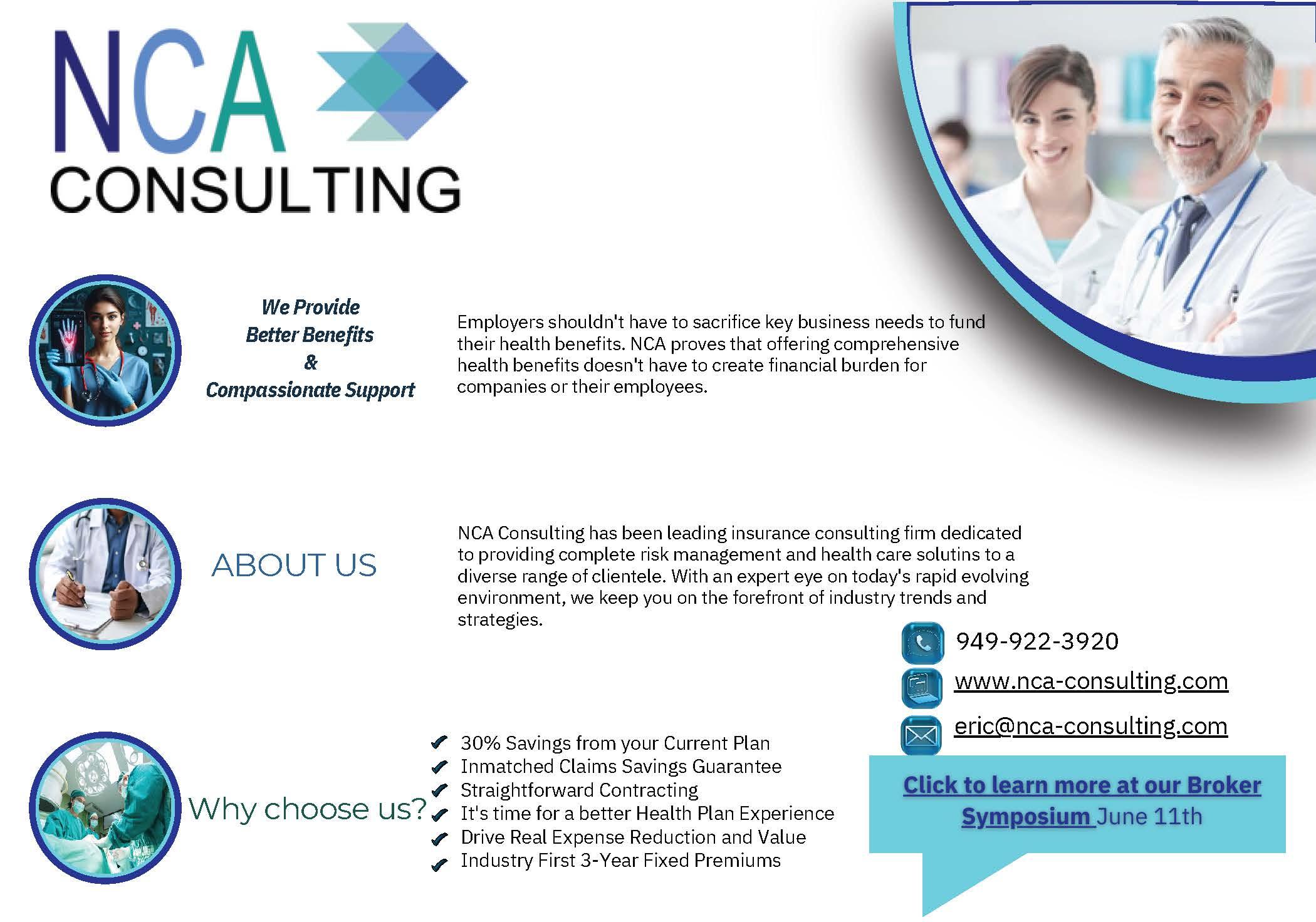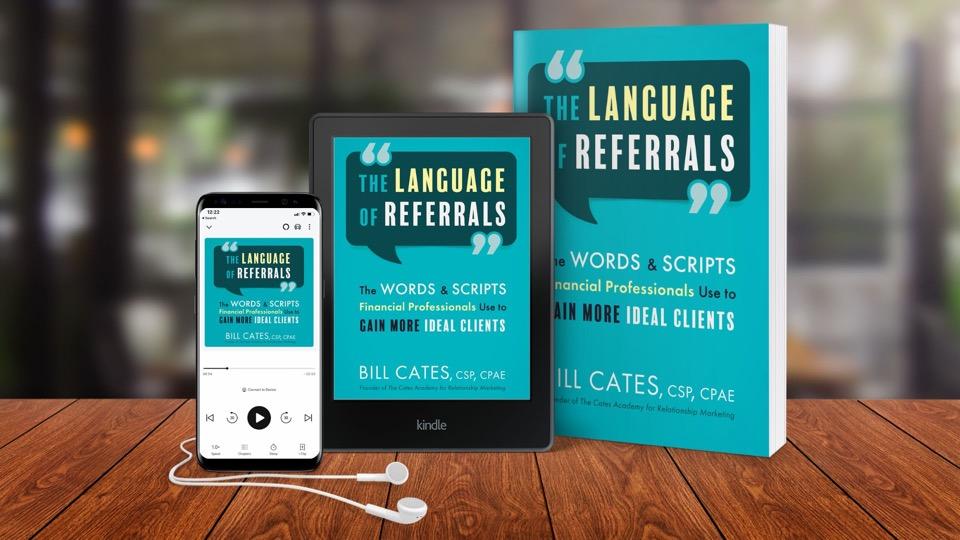

with NABIP CEO Jessica Brooks-Woods























































with NABIP CEO Jessica Brooks-Woods




































































More than 200,000 small to medium-sized businesses depend on BenefitMall’s guidance and leadership for employee benefits solutions—and for good reason. BenefitMall leverages innovative technology, backed by our human expertise to provide brokers with the fastest, easiest, and most trusted benefits selling experience.
From quote to enrollment and more, BenefitMall will help you support and retain your clients. Join us and let’s grow business together! Scan to Request to be Broker Partner

How
TPA

Quoting
Medical




























PEOs with BBSI
Picking a PCP
Joining a team

Health care systems updates
Drug Formularies
Tech and AI
Exit Planning Issues for Employers
How to Sell your Group book of business inside, outside, merge
Protect Commissions remain active










Cal Broker’s commitment is to be the leading source of news and information for California brokers and agents operating in the health, life, and annuity industry.
We are committed to connecting Life and Health insurance professionals to valuable resources and solutions they can provide to their insurance clients
16 DISABILITY INSURANCE
Income Replacement Strategies Brokers can learn more about the significance of adequate disability insurance for income replacement, along with a summary of different disability insurance plans.
By Joe Russo
18 DISABILITY INSURANCE
Disability Insurance Awareness Month: Protecting Your Paycheck and Your Future
LIMRA data suggests a significant gap between those who recognize they need disability coverage and those who have disability coverage.
By LIMRA
20 LIFE INSURANCE
Life Insurance Settlements: What Types of Policies Can Be Sold? And, More Importantly, Why?
Delve into more detail as to which types of life insurance policies sell better than others, why that is, and why clients choose to sell them.
By Lisa Rehburg
22 PROFESSIONAL DEVELOPMENT NABIP
Learn from an interview with our publisher and CEO Jessica Brooks-Woods of the National Association of Benefits and Insurance Professionals, who is focused on shaping the future of healthcare by driving affordability and equity for all.
By Phil Calhoun
26
WOMEN’S HEALTH
Prenatal Health Tips
As health insurance professionals, you can be a source of reliable and straightforward prenatal health tips. Here are ten basic tips to suggest to your clients
By Emma Peters
28
MEN’S HEALTH
The Dietary Key to Men’s Health Brokers should learn more about this powerful food substance that can help reduce both heart and cancer risk to best support their male clients and suggest ways that they can maintain optimal health.
By Megan
Wroe MS, RD, CNE, CLEC
30
INSURANCE INNOVATIONS
Four Ways Insurers are Reimagining the Dental Benefits Landscape
Learn about four trends altering the way dental care is paid for, as insurers are reimagining the way they do business to better serve consumers.
By Edward Shellard
32
PROFESSIONAL DEVELOPMENT
How to Perfect Your Health Insurance Pitch to Small Businesses
There are over 33 million small businesses in the US, and as a life and health insurance broker, tapping into this market segment can take your business to the next level. However, the strategies used to sell health plans to large businesses don’t work for small to mid-size business (SMB) owners who have a unique set of needs and budgetary constraints. Learn how to perfect your pitch as a small business owner.
By Bill Mason
34
PROFESSIONAL DEVELOPMENT
5 Tips to Grow Your Business on LinkedIn
Mastering LinkedIn can set you apart from competitors and significantly boost your business growth. Here are five detailed strategies to help you optimize your LinkedIn presence.
By Andy Neary
36 GROUP BENEFITS Covering Coverage Gaps
With savings that are unattainable from the legacy insurance plans, you can help your clients offer better benefits at a lower cost. Let’s look at a modern health plan that solves these challenges with an allinclusive solution, less costly health plan with a remarkable member experience built on next-generation technology and payment practices.
By BeneeMed
38
BOOK REVIEW
Book Review & Interview: The Language of Referrals by Bill Cates
Learn from an interview with Bill Cates on his newest book, which offers in-depth guidance to achieve the confidence and fluency needed to effectively gain referrals and introductions.
By Phil Calhoun
40
INSURANCE INNOVATIONS
Grow your Revenue with Healthcare2U's Nationwide Direct Primary Care: AWin-Win forAdvisors and Employers in California
Already a leader in delivering nationwide access to thousands of individuals across the U.S. through board-certified physicians, Healthcare2U is making a push to ensure health advisors in California have an affordable cost-saving solution for employers impacted by the state's recent minimum wage increase. Learn about these solutions..
ByAndy Bonner
42
PROFESSIONAL DEVELOPMENT
What Is Your Capacity for Growth?
You can enhance your practice if you have built the infrastructure to support the new responsibilities inherent in having additional clients. Let's examine a few ways to embrace growth while keeping your brand's reputation solid..
By Dan Mangus
PUBLISHER Phil Calhoun Health Broker Publishing, LLC publisher@calbrokermag.com
ART DIRECTOR Randy Dunbar Randy@calbrokermag.com
PRODUCTION DIRECTOR Zulma Mazariegos Zulma@calbrokermag.com
DIGITAL DIRECTOR Carmen Ponce Carmen@calbrokermag.com
CIRCULATION
zulma@calbrokermag.com
120,000 subscribers 12,000 monthly website visits
ADVERTISING
Health Broker Publishing 14771 Plaza Drive Suite C Tustin, CA 92780 714-664-0311 publisher@calbrokermag.com
publisher@calbrokermag.com
Subscriptions: U.S. one year: $24. Send change of address notification at least 20 days prior to effective date; include old/new address to:
Health Broker Publishing 14771 Plaza Drive Suite C • Tustin, CA 92780 714- 664-0311
California Broker (ISSN #0883-6159) is published monthly. Periodicals Postage Rates Paid at Burbank, CA and additional entry offices (USPS #744-450).
POSTMASTER: Send address changes to California Broker, 14771 Plaza Drive Suite C • Tustin, CA 92780
©2024 by Health Broker Publishing. All rights reserved. No part of this publication should be reproduced without consent of the publisher.
No responsibility will be assumed for unsolicited editorial contributions. Manuscripts or other material to be returned should be accompanied by a self-addressed stamped envelope adequate to return the material. The publishers of this magazine do not assume responsibility for statements made by their advertisers or contributors.


FIRST
JULY 2ND 10AM- 11AM
Health insurance professionals can find ways to separate themselves from the competition when looking at the Best Practices of trusted advisors.


The Department of Health and Human Services (HHS) Office for Civil Rights (OCR) and the Centers for Medicare & Medicaid Services (CMS) recently issued a final rule under Section 1557 of the Affordable Care Act (ACA) that strengthens anti-discrimination protections in health programs and activities. Section 1557 prohibits federally funded health programs and services from discriminating on the basis of race, color, national origin, age, disability, or sex. The changes laid out in the landmark rule restore critical protections that were removed by the Trump administration, while also expanding and updating protections for marginalized communities.
Importantly, for the first time, Medicare Part B payments are considered a form of federal financial assistance for purposes of triggering civil rights laws enforced by HHS. This means that health care providers and suppliers receiving Part B funds are prohibited from discriminating on the basis of protected characteristics such as race, sex, and disability. The rule also reinstates application of Section 1557 to all HHS-administered programs and activities. This will protect vastly more people from discrimination across HHS’s broad range of health programs, including Medicare beneficiaries. The Center for Medicare Advocacy strongly supports these expansions of the scope of Section 1557’s application.
The rule also applies the nondiscrimination principles of Section 1557 to artificial intelligence decisionmaking tools, which are often utilized by
private Medicare Advantage Plans. The Center is reviewing the final rule and applauds strengthening non-discrimination protections.
Detailed analysis from our friends at NHeLP is available here: Regarding artificial intelligence and plan decisions: 1557 Final Rule Protects Against Bias in Health Care Algorithms – National Health Law Program
HHS also recently finalized a rule under Section 504 of the Rehabilitation Act (Section 504) that prohibits discrimination on the basis of disability in programs and activities that receive funding from HHS, such as private Medicare Advantage and Part D plans. The rulemaking marks the first update to the Section 504 regulations in 50 years and reflects decades of advocacy by the disability rights community.
As HHS said in a statement, the rule, “[e]nsures that medical treatment decisions are not based on negative biases or stereotypes about individuals with disabilities, judgments that an individual with a disability will be a burden on others, or dehumanizing beliefs that the life of an individual with a disability has less value than the life of a person without a disability.”
The final rule also makes requirements consistent with the American with Disabilities Act to improve and simplify compliance.
The Center for Medicare Advocacy is reviewing the final Section 504 rule as well and applauds its strengthening of disability protections.
By Rylee Wilson
The Cigna Group reported a $277 million net loss in the first quarter of 2024.
The company published its first-quarter earnings May 2. The loss was tied to losses in the value of VillageMD, of which Cigna is a minority owner.
Cigna raised its earnings outlook for the year, projecting adjusted earnings of at least $28.40 per share, up 15 cents from its last earnings report. The company exceeded Wall Street’s expectations in its first-quarter earnings, according to The Wall Street Journal.
Losses in value for VillageMD, an older adult-focused primary care group, have driven losses for other healthcare companies this quarter. Walgreens reported a $6 billion loss in the first quarter, driven by VillageMD, according to Forbes.
Total revenues for the Cigna Group in the first quarter were $57.2 billion, up 23% year over year. For Evernorth, Cigna’s health services segment, revenues were up 28% year over year to $46.2 billion.
For the company’s insurance segment, Cigna Healthcare, revenues grew 4% year over year to $13.3 billion. The segment’s medical loss ratio was 79.9% in the first quarter, compared to 81.3% in the same period last year.
As of March 31, Cigna had 19.2 million medical members, a decrease year over year. The decline was driven by a loss in individual plan customers, according to the earnings report.
The company increased its projected year-end revenues to at least $235 billion. Full-year adjusted income from operations is projected to be at least $8.1 billion.
The Cigna Group also said the planned sale of its Medicare Advantage business to Health Care Service Corp. is expected to close in the first quarter of 2025.
SOURCE: https://www.beckerspayer.com/payer/cignaposts-277m-q1-loss-raises-2024-outlook.html
By Trevor Jennewine
The Senior Citizens League now expects Social Security benefits to get a 2.6% cost-of-living adjustment (COLA) in 2025, the smallest increase for beneficiaries in several years.
The bad news: The forecasted COLA of 2.6% in 2025 is unlikely to help retirees struggling with inflation simply because it represents a smaller pay increase than the two preceding COLAs.
The worse news: Social Security benefits may lose purchasing power next year because the forecasted COLA of 2.6% may understate how much inflation impacts Social Security recipients.
Social Security benefits are on track to get a smaller costof-living adjustment (COLA) next year, and the pay raise may not be enough to offset inflation.
Social Security payments get an annual cost-of-living adjustment (COLA) to protect the buying power of benefits from inflation. COLAs depend on how the CPI-W (a subset of the Consumer Price Index) changes in the third quarter, meaning the three-month period running from July through September. For example, the CPI-W rose 3.2% in the third quarter of 2023, which led to a 3.2% COLA for Social Security benefits in 2024.
statistics are unlikely to improve if Social Security benefits increase 2.6% next year, simply because that figure is smaller that both of the preceding COLAs. However, the findings of the 2024 RCS beg the question: Why are so many retirees struggling with inflation?
One explanation is that Social Security COLAs depend on third-quarter changes in the CPI-W, which means benefits could fall behind inflation if the full-year CPI-W increases more profoundly than the third-quarter CPI-W. Lo and behold, that is precisely what happened last year: The full-year CPI-W increased 3.8%, but the third-quarter CPI-W (and Social Security benefits) increased just 3.2%.
Social Security benefits are on track to get a smaller cost-of-living adjustment (COLA) next year, and the pay raise may not be enough to offset inflation.
The Social Security Administration cannot calculate the official COLA for 2025 until the Labor Department releases its September inflation report later this year, on Oct. 10. But The Senior Citizens League, a nonprofit and nonpartisan advocacy group, has already made several COLA forecasts, each one higher than the last.
That may sound like good news. Unfortunately, the most recent COLA forecast comes with bad news and worse news. Here’s what you should know.
The bad news: Social Security benefits are on track to get a smaller cost-of-living adjustment (COLA) next year.
The Senior Citizens League (TSCL) recently revised its 2025 cost-of-living adjustment (COLA) forecast to 2.6%. That is higher than its previous estimate of 1.8%, which itself was higher than the previous estimate of 1.4%. But TSCL’s latest COLA forecast is still bad news for retired workers struggling with inflation.
Social Security benefits got an almost unprecedented 8.7% COLA last year, followed by an above-average 3.2% COLA this year. However, the 2024 Retirement Confidence Survey (RCS) still found that 26% of retired workers doubt they have enough money to live comfortably through retirement, and 56% expect to make substantial spending cuts due to inflation.
I say the latest COLA forecast is bad news because those
The worse news: Social Security benefits may lose more purchasing power than the CPI-W inflation numbers suggest
The TSCL’s forecast for a 2.6% COLA in 2025 may come with worse news. The problem I just described -- that is, the full-year CPI-W increased more than the third-quarter CPI-W last year -- implies that Social Security benefits lost buying power. But the numbers I gave may understate the problem, because the CPI-W may be a poor measure of inflation for Social Security recipients.
To elaborate, Social Security COLAs are based on the Consumer Price Index for Urban Wage Earners and Clerical Workers (CPI-W), a metric that reflects spending patterns among office workers and hourly wage earners. But workers tends to spend money differently than retirees on Social Security. For instance, retirees often spend more on housing and healthcare.
To that end, certain experts believe COLAs should be calculated using another subset of the CPI known as the Consumer Price Index for the Elderly (CPI-E), a metric that reflects spending patterns among individuals aged 62 and older. If the CPI-E is indeed a better measure of inflation for Social Security recipients, then the forecasted COLA of 2.6% in 2025 is even worse news for two reasons.
First, the full-year CPI-E increased 4.6% in 2023, meaning benefits lost even more purchasing power than implied by the full-year CPI-W increase of 3.8%. Second, the CPI-E increased 3.6% during the first quarter of 2024, while the CPI-W increased just 3.2% during the same period. In other words, CPI-E inflation is once again running hotter, so Social Security benefits may lose more purchasing power next year than the CPI-W inflation numbers suggest.
June 22-June 25
NABIP2024Annual Convention @ Hyatt Regency Chicago, Register: https://bit.ly/3WV6q7E
June23-26
Societyfor Human Resources Management SHRM24Annual Conference and Expo @ Chicago, Register: https://annual.shrm.org/
October 6-8
NAIFAe3 Conference @ Sonesta Redondo Beach & Marina, Register: https://bit.ly/4bGLzta
June
June 6
@5:00pm, NAIFALABilliardsSocialFunNight@Busby's West Sports Bar Register: https://bit.ly/44XirM2
June 13
@2:30 -4:00pm, EPI Orange County, An Intimate Conversation with an Owner @ Maggiano's South Coast, Register: https://scinstitute.org/epioc/
June14
@11:00am-1:30pm NAIFACASan Luis Obispo Dine & Connect @Ventana Grill Register: https://ca.naifa.org/dine-and-connect
June14
@12:00-5:30pm, CAHIPLA-Dayat the Races at SantaAnita Park & General Meeting Registerhttps://cahip-la.org/meet-reg1.php?id=13
June19
@10-11 am, CAHIPLAMedicareAgents Quarterly: Coffee Chats (Zoom) https://cahip-la.org/meet-reg1.php?id=11
June 19
@10:00am-7:00pm, CAHIPSan Diego -Annual Summer Golf Classic, @ Maderas Golf Club Register: https://sdahu.org/event/annual-summer-golf-classic/
June19
@2:30 -4:00pm, EPI San Diego: An Intimate Conversation with an Owner: Exit, Failure, Retry, Success @ Crust Pizzeria Solana Beach Register: https://scinstitute.org/episd/
June26
@2:30-4:30 pm, EPI LATax Mitigation Planning BeforeThe Sale of a Business @ Capital Group 11100 Santa Monica Blvd Register: https://share.hsforms.com/1NtEDEcq1TS2jMMWW_TselA43422
August 14
@10:00am-5:30pm CAHIP-LAMedicare on the LaLa Land Stage-The Sequel Register: https://bit.ly/3Vc0GFu
August 20-22
NABIPSenior Summit @ Pechanga Resort Casino Register: https://theseniorsummit.net/
August 28
@8:00 am-4:00pm, 2024 SAHU Business Medicare Expo, Register: https://bit.ly/3Xb7l4f
By T. Edelman
Nursing home operators, owners, and their trade associations continue their relentless opposition to the federal nurse staffing rule that the Centers for Medicare & Medicaid Services (CMS) publicly released on April 22, 2024. They repeat their longstanding claims that there’s no one to hire, the staffing rule is an unfunded mandate, facilities will close and older people will have nowhere to go for care. These claims are not true and cannot withstand analysis.
Facilities claim that they cannot meet the staffing requirements of the final rule because there is no one to hire. However, the Abt 2023 staffing study used by CMS to draft the staffing rule found that non-profit and government-operated nursing facilities already exceed the 3.48 hours per resident day (HPRD) of nursing staff, employing more than 4.2 and 4.1 HPRD, respectively, of nursing staff today. Why does Leading Age, the trade association of non-profit nursing facilities, object to the 3.48 standard that its own members already exceed? Moreover, according to the Abt 2023 staffing study, even during the pandemic,
nursing facilities staffed at 3.76 HPRD and for-profit facilities, the most poorly staffed segment of the nursing home industry, staffed at 3.57 HPRD. What is the objection now to 3.48, which will not even be in effect until 2027 for non-rural facilities and 2029 for rural facilities?
Another component of the final rule is a requirement for a registered nurse to be on-site in every nursing facility, 24 hours per day, seven days per week, beginning in 2026 for non-rural facilities and in 2027 for rural facilities. Both national nursing home trade associations, American Health Care Association and Leading Age, wrote and supported Care for Our Seniors Act which, among its provisions, called for registered nurses 24 hours per day, seven days a week – exactly what the final staffing rule mandates. Why are they objecting now?
The trade associations argue that facilities will be forced to use expensive nurse staffing agencies to get nurses to work in their buildings. The fact that staffing agencies employ nurses shows that the issue is not the lack of nurses in the country; the issue is the lack of nurses who want to work for nursing facilities. If nursing homes were more desirable places of
employment, more nurses would be willing to work for them. The industry claims that the paraprofessional nursing staff, certified nurse aides, are also in short supply. The reasons are clear. When nurse aides are paid poverty-level wages with limited benefits, are fired for mistakes caused by lack of sufficient staff, endure poor working conditions that, according to the federal Bureau of Labor, make nursing home employment for aides one of the most dangerous jobs in the country, and hear endlessly from nursing home owners, operators, and their trade associations that facilities are understaffed and will close, it is no wonder that people choose other employment, especially in times (like now) of low unemployment. Improving the working environment would help nursing homes hire and retain nursing staff.
Unfunded mandate? Facilities need more money?
READ MORE: https://bit.ly/4dxjUfP
By Kelly Loussedes (NABIP)
Washington, D.C.- Washington, D.C.
— The National Association of Benefits and Insurance Professionals (NABIP) commends U.S. Representatives Lloyd Smucker (R-PA), Gus Bilirakis (R-FL), Susan Wild (D-PA), Angie Craig (DMN), Tim Walberg (R-MI), and Mike Thompson (D-CA) for their pivotal roles in introducing the Medicare Enrollment Protection Act of 2024. This legislation would effectively treat COBRA as creditable coverage, like seniors who remain on their employer-sponsored coverage and then enroll in Medicare.
Under the current system, seniors on COBRA face penalties for not transitioning to Medicare Part B within eight months of turning 65, despite maintaining the same employersponsored coverage where they pay the full premium. The proposed bill aims to eliminate these penalties by offering a separate Medicare enrollment period
for these individuals, ensuring they are treated equitably.
“The Medicare Enrollment Protection Act of 2024” is a crucial advancement in ensuring fair treatment for all seniors, particularly those on COBRA,” stated Jessica Brooks-Woods, CEO of NABIP. “The bill enables seniors to choose healthcare options that best suit their personal needs without the fear of a lifetime penalty.
“The introduction of this bill is timely, as it addresses the needs of an increasing number of seniors who choose to remain in the workforce or maintain COBRA coverage for various reasons such as ongoing medical treatments, financial considerations, or family coverage needs. NABIP applauds the bipartisan effort behind this proposal and urges all members of Congress to support its passage, thereby protecting seniors from unnecessary financial burdens and supporting their right to continuous health coverage.
“The efforts reflected in the Medicare Enrollment Protection Act align closely with NABIP’s Healthcare Bill of Rights, advocating for uninterrupted access to healthcare and health equity. This bill is a testament to bipartisan cooperation and NABIP’s dedication to advocating for policies that safeguard the healthcare rights of seniors.”
NABIP is the preeminent organization for health insurance and employee benefits professionals, working diligently to ensure all Americans have access to high-quality, affordable healthcare and related benefits. NABIP represents and provides professional development opportunities for more than 100,000 licensed health insurance agents, brokers, general agents, consultants, and benefit professionals through more than 200 chapters across America.
Every year, the Social Security and Medicare Boards of Trustees release reports on the fiscal health of the Medicare and Social Security programs. On May 6, 2024, the Trustees released their 2024 annual reports: the Medicare Trustees report is available here, and a fact sheet summarizing the reports is available here. As noted in the fact sheet:
The Hospital Insurance (HI) Trust Fund will be able to pay 100 percent of total scheduled benefits until 2036, 5 years later than reported last year. At that point, that fund’s reserves will become depleted and continuing program income will be sufficient to pay 89 percent of total scheduled benefits [emphasis added].
The Supplemental Medical Insurance (SMI) Trust Fund is adequately financed into the indefinite future because, unlike the other trust funds, its main financing sources–enrolled beneficiary premiums and the [associated] federal contributions from the Treasury–are automatically adjusted each year to cover costs for the upcoming year. Although the financing is assured, the rapidly rising SMI costs have been placing steadily increasing demands on beneficiaries and general taxpayers.
As the Center regularly points out when
the Trustees’ report is released (see, e.g. here), the projected life of the HI trust fund has varied considerably over the years, based on a number of factors, including the health of the economy. Congress has never let the fund become insolvent. What happens if the fund does become insolvent? The fund’s reserves will become depleted and continuing total program income will be sufficient to pay 89 percent of total scheduled benefits. That means an 11% reduction in what there is to spend on Part A – not a situation we want to get to, but a far cry from “bankruptcy” or “going broke” that many policymakers claim.
As the Center has noted in the past, there are various ways to address Medicare’s solvency by raising revenues, reducing spending, or both. For example, a May 2021 issue brief written by Center for Medicare Advocacy Visiting Scholar Marilyn Moon examines how Medicare has operated over time, how well it is doing at present, and what changes have been used in the past to keep the program financially strong. The brief outlines potential shortterm and long-term funding solutions

through raising additional revenues. Also see, e.g., this Center on Budget and Policy Priorities post (May 7, 2024) discussing the 2024 Trustees report and President Biden’s proposed 2025 budget that would address the fund’s shortfalls.
One significant and obvious option, which is ignored by most policymakers, is to look at the Medicare Advantage (MA) program. There is consistent, and growing evidence that the Medicare Advantage program is paid more than traditional Medicare would spend on the same beneficiary, and such spending is growing per person, with significant implications for Medicare programmatic spending (see, e.g., this CMA Alert (February 22, 2024).
As the Center noted in a CMA Alert (March 3, 2022), when it comes to Medicare policy discussions on Capitol Hill two things are commonly raised: active support for Medicare Advantage (MA), and the looming insolvency of the Part A Trust Fund. Despite the painfully obvious connection between these two, however, they are rarely discussed together. As the MA program puts increasing pressure on Medicare’s finances, this dynamic is getting harder to ignore.
D. Lipschutz
Thank you for working with the Cigna + Oscar team and for giving us the opportunity to serve your clients in 2024. After careful consideration, Oscar and Cigna Healthcare have made the decision not to renew Cigna + Oscar Small Group plans nationally as of December 15, 2024.
Cigna + Oscar has proudly served Small Group members since 2020. We have valued our time in the market and the key partners we’ve worked with.
We will continue to provide coverage for Cigna + Oscar Small Group services through the end of each member’s policy, and specific timing is dependent on each groups’ enrollment date.
Key dates to know:
• Cigna + Oscar will no longer enroll new small groups beginning January 1, 2025.
• The last date for an employer to start a new policy with Cigna + Oscar will be December 15, 2024.
• Cigna + Oscar will not renew Small Group plans beginning January 1, 2025.
• The last Cigna + Oscar Small Group plans renewed will be those with effective dates of December 15, 2024.
• The last date of member coverage in the market will be December 14, 2025.
Cigna + Oscar is fully committed to ensuring this transition is as smooth as possible for brokers, employers, members and providers alike. Cigna + Oscar will notify plan sponsors and covered individuals of the discontinuance according to required federal and state timelines.
If you have questions:
Call Cigna + Oscar at (855) 672-2784 or (855) 672-2789 Monday - Friday between 8 a.m. and 8 p.m.
Para obtener asistencia en Español, llame al (855) 672-2755

As publisher of Cal Broker Magazine, I was so pleased to attend this event with the many established industry professional speakers and many friendly NAIFA members, including David Chapman who provided many with a warm welcome upon arrival. Sitting at the “dignitary table” I joined the Immediate Past President of NAIFA-National Bryon Holz, with the current NAIFA-California President Jason Foster, the 2024 Will G. Farrell Public Service Award Recipient Stephen Kagawa, and the current NAIFA-LA President Alvin Parra.
This even included more than awards. The networking, fellowship, friendship, and success tips from the speakers on how to advocate for clients and work with colleagues truly matched the Pathway to Success theme. When the Million Dollar
BY PHIL CALHOUN
Round Table speakers responded to various questions, there were many best practice tips and prospecting and sales ideas which all attendees enjoyed and will be able to utilize. This panel included Mr. Holz, Mr. Kagawa, and R.J. Kelly and Maryam Rasouli. The current President of NAIFA-LA, Alvin Parra, did an outstanding job as the MC and asked several great questions that the panel members hit out of the park! The esteemed panel members have provided years of service to clients and, as members of NAIFA, to their colleagues. It was refreshing to learn about the ways they have consistently grown by adjusting to the changes in the industry including the Department of Insurance efforts to oversee annuity sales, SB263, and the LTCi initiatives for Employers
located in California. These extraordinary panel members and advisors provided many tips and techniques, along with fun stories, which attendees enjoyed.
Later in the evening I shared a few words about Cal Broker, that we moved to a digital media company and that all NAIFA members are encouraged to submit articles and join our eDirectory. With all of our media now sent to 110,000 subscribers I hope that NAIFA members will respond. With over 50,000 financial planning member experts in NAIFA, Cal Broker is the ideal fit for these professionals to bring their knowledge of life insurance, annuities, and financial planning as collaborative partners to Cal Broker subscribers.

The award winner for the 71st Annual Will G. Farrell Public Service Award is Stephen Kagawa of The Pacific Bridge Companies. Stephen is a long-time member of NAIFA and has grown his wealth management company. His team helps with global financial navigation across the financial spectrum. Stephen expressed success tips attendees can apply, and he also shared how as professionals impacted by market and industry trends, we need to ride through the difficulties through sharing expertise and collaborating on ways to apply best client management practices. One can clearly see why Stephen received this award, which is due to his distinguished work within the industry and his unselfish service to clients and NAIFA members. The trophy, about four feet high, will have Stephen’s name placed permanently joining previous and future winners for future members and awardees to see.
Some of the tips I want to share include:
Take time before and after an event, conference, to arrive a day before and get focused before and then stay a day after to network and enjoy the location. How often do we arrive and check in late, rush through sessions during and then leave as or before the event ends.
LinkedIn, I know most have a profile and we may update with a new connection or comment on a posting sometimes. What was explained is with the newer features available, the reach of a profile and posting can be huge when you take the time to write or record content. Many of the speakers have benefited from an active LinkedIn presence.
Client appreciation events. Many spend time servicing clients and looking for new leads. Appreciation events shared by speakers were themed and not always connected to a sale. Then recorded and shared on LinkedIn and a website designed to have this type of content.

Many of these professionals have authored books, I hope to do a review of Maryam Rasouli’s book soon, and R.J. Kelly also has a new book out I hope to read as well.
NAIFA is led by its strong board members, devoted association members, and especially Bobbi Barbera and Executive Director Janet Fishman.
To learn more about joining one of the local events: www.naifala.org
The Cal Broker calendar of events includes links to NAIFA-LA events.
In Disability insurance isn’t usually the first product on the minds of most U.S. insurance advisors, nor is it on the minds of their clients. The average American seldom inquiries about most aspects of insurance, but when they do, it usually entails coverage types more requisite to government mandates, like medical or auto insurance, or preconceived notions of coverage for definite eventualities, like life insurance. We all know that someday each of us will die. That is a fact. But mistakenly, most of us never think we will be so sick or injured that we can’t work and earn a living.
BY JOE RUSSO
Americans, regardless of age or gender have a generalized “Superman” complex, not believing they are susceptible to accident or illness and eventual temporary or permanent disablement. But the statistical data relays a vivid picture much to the contrary. According to the Council for Disability Awareness, more than one in four 20-year-olds can expect to be out of work for at least a year due to disablement before they reach retirement age. And 5.6 percent of working Americans suffer a short-term disability every year. In spite of this alarming information, 51 million working adults in this country are living without some form of disability insurance other than unreliable Social Security benefits. Furthermore, most U.S. households lack adequate savings, liquid assets or balanced retirement vehicles in case of long-term disablement. Only 48 percent of American adults report that they have saved enough to cover three months of living expenses if they encountered a stoppage of income.
Income is our greatest asset. Without a steady inflow of personal capital, we as Americans cannot expect to flourish let alone maintain a life of avid consumerism in a country where we must pay to survive. Food, shelter, clothing, healthcare, schooling, transportation, insurance, entertainment – it all costs money. Without an income, the dominoes fall and life turns to chaos and eventually financial ruin for your clients and their dependent families.
In consideration of all of this, it becomes most apparent that adequate disability insurance for income replacement should be the cornerstone of any sound financial plan for every working American. Disability insurance is fundamental and must be prescribed as often as life or medical insurance. And you, the broker and trusted advisor must promote it, sell it, because DI doesn’t sell itself. But how much DI is sufficient? Financial experts agree that 65 percent of monthly income replacement is the absolute minimum level needed to maintain some semblance of one’s pre-disability lifestyle in case of total disablement.
But a single disability income policy is not going to cut it. You would be hard pressed to provide your clients with enough protection from one disability policy because insurance companies want it that way. Carriers regularly practice reverse discrimination when it comes to income protection. The more income you earn, the lower
the percentage level of income protection is allowed by insurance companies. Their methods of shunning risk accumulation keep higher income earners from being sufficiently insured. Traditional DI companies view higher benefits as compelling incentives for insured persons to unnecessarily and prematurely go out on claim. High-limit disability benefits make most carriers uneasy. However, the industry has solutions to this egregious problem through a tiered approach of layering multiple, comprehensive disability plans through different carriers from different sectors of the market, one on top of another to achieve a desired income replacement level.
Many working professionals are provided employer-sponsored or employer-paid, guaranteed-issue, group long-term disability benefits which usually have modest benefit caps that provide employees with common benefit levels up to 40 percent to 60 percent of income. Group benefits like that, on a fiduciary level, prove to be mostly sufficient for many working Americans. But the usual policy caps of $7,500 to $20,000 per month hardly allow for enough protection for higher income earners, which is where we regularly witness the discrimination.
The next option is a layer of individual, fully underwritten disability insurance. IDI is the mainstay of the industry and is marketed by numerous life and health carriers. The available benefits and riders are robust and long-term in nature, but again, we find excessive limitations when considering high-net-worth clientele. Those making in excess of $300,000 annually will still find it difficult to reach that 65 percent income replacement figure when dealing with only one or two traditional layers of disability insurance.
The GSI market continues to be very lucrative, and recently has become the focus of many in the business. However, a very important income replacement strategy that is often overlooked by many insurance agents deals with the use of personal DI benefits to address business risks. This is a serious conundrum that, unbeknownst to many, has plagued the disability insurance industry for many decades.
Business owners often face more responsibility and risk than their employees. In addition to protecting personal assets and their own livelihoods, owners are also tasked with maintaining business entities that they and their employees count on. The running and growth of those business entities naturally create several liabilities that require financial protection through disability insurance.
The ultimate tool in replacing one’s income is high-limit or excess disability coverage.
Unfortunately, it is a common occurrence for owners to assign their personal disability income benefits to indemnify business risk that can be better solved using ancillary DI products such as business overhead expense (BOE) coverage, buy/sell insurance, key person coverage or loan indemnification. The underuse of the latter is the most common folly.
The ultimate tool in replacing one’s income is high-limit or excess disability coverage. The third tier of income indemnification can be found in the secondary or Surplus Lines market which harbors specialty carriers like Lloyd’s of London and their marketplace of high-limit DI experts where extraordinary earnings can be appropriately insured to levels of at least 65 percent of income replacement.
Another strategy of layering multiple policies for higher levels of disability benefits can be found among the recently expanded guaranteed-issue or GSI market offerings. GSI coverage is being touted by both domestic and specialty-market carriers, commonly replacing IDI and high-limit excess layers. The GSI product lines are attractive to consumers, employers, human resource managers and insurance professionals.
As the product name suggests, these multi-life policies are guaranteed issues, requiring no time consuming, physically intrusive exams, blood draws or urine samplings, allowing employees to sign-up electronically or with simple enrollment forms. The ease of enrollment is beneficial to all parties involved and gives employers the clout of providing added benefits, promoting employee contentment and retention. Furthermore, the price is certainly right for GSI program sponsors as the products usually call for substantial group or multi-life premium discounts.
In terms of marketing, GSI product platforms lend themselves nicely to coveted groups commonly targeted by brokers such as law firms, accounting agencies, hospitals, surgery centers and other large corporate entities. And much to the pleasure of the brokers landing this type of business, the commissions are significant, and the business tends to stay on the books for years.
The lending of capital by the Small Business Administration and other commercial and private financial institutions is a routine aspect of business development and company growth in the U.S. Most lenders require disability insurance policies as collateral to help indemnify risk to secure business loans. Because they are misinformed and/or striving to be frugal, borrowers frequently assign personal DI benefits or their existing BOE policies to secure needed loans. This creates the terrible problem that in time of disablement, the borrower would stand to lose important income replacement for the protection of their families or benefits specifically earmarked for business continuation while they are out on disability.
The sacrifice of personal DI benefits to cover business risks or the sacrifice of BOE benefits to cover loan requirements should not be advised. There are ample solutions in the market to address these scenarios such as business loan indemnification insurance as well as contract guarantee insurance. Both are available as separate resources to usual business disability insurances, and available benefits can be manipulated to cover specific contractual needs of business owners.
Income replacement through disability insurance gives back financial freedoms that are commonly stolen by disabling accidents and illnesses. The advanced strategies discussed will assist you in providing your clients with the sincerest protection of their greatest asset – their income.

Joe Russo is a sales and marketing specialist at Petersen International Underwriters. He is also the editor-in-chief of their publication The Communicator. Russo can be reached at Petersen International Underwriters, joe@piu.org 800-345-8816
23929 Valencia Blvd, 2nd Floor, Valencia, CA 91355

lthough no one likes to think about it, the likelihood of a disability is more common than people realize. The Social Security Administration reports that about 1 in 4 of today’s 20-year-olds will become disabled before reaching retirement age.1 In addition, the Centers for Disease Control and Prevention notes that 27% of American adults currently live with a disability.2 These statistics underscore a major truth: We must protect our incomes from the impact of an unexpected disability.
Despite this evident need for disability insurance, LIMRA data suggests a significant gap between those who recognize they need coverage and those who actually have coverage. The 2024 Insurance Barometer Study, conducted by LIMRA and Life Happens, shows that 46% of U.S. adults say they need some sort of disability insurance. Yet, currently, less than 1 in 5 consumers (18%) say they have it — and LIMRA estimates that true individual ownership may be far less. This does not include coverage they may have obtained through work.
BY LIMRA
THE 2024
SHOWS THAT 20% OF ADULTS SAY THEY INTEND TO PURCHASE
Lack of knowledge about disability insurance could play a big role in the lack of protection. Just 16% of adults say they are very/extremely knowledgeable about disability insurance. This signals a significant need for education about disability coverage not only on the individual level but within the workplace as well. According to the LIMRA’s 2024 BEAT Study, employees opt out of employer-sponsored disability plans for the following reasons:
They don’t believe they need the benefit; They don’t think the benefit is worth the cost; and They don’t think they can afford the benefit.
Less than half of employees believe they understand disability insurance somewhat or extremely well. What this ultimately shows is that our industry can do more to better educate and communicate the need for disability coverage, the value it provides, and the risks of not having coverage.
One way to build awareness and understanding around disability insurance is by educating consumers and employees about the cost a disability can inflict upon a household. The National Disability Institute found households with one adult who has a disability require 28% more income to retain a similar standard of living than households without an adult with a disability.3
That’s a staggering number. According to 2024 Insurance Barometer Study data, consumers without disability insurance coverage say their families would resort to tapping into personal savings (48%) or retirement funds (26%) to meet their day-to-day expenses. Consumers need to understand that there’s a lot at risk should the primary wage earner become disabled. Disability insurance can help safeguard against undermining one’s future financial security.
“The workplace continues to be an important way for consumers to obtain the insurance coverages they need,” notes Patrick Leary, corporate vice president, LIMRA Workplace Benefits Research. “This is especially true of middle-market consumers who may not have a personal financial advisor to help them address these needs.”
In fact, according to LIMRA’s Consumer Sentiment survey, more than 7 in 10 workers rely on — at least to some degree — their employee benefits plan to meet their disability insurance needs. It’s important to keep reemphasizing the value of participating in an employer-sponsored disability insurance plan to protect their financial future.
Sixty-seven percent of employees who choose not to enroll in disability benefits either believe the coverage is too costly or say they don’t need it. The truth is that many employers provide disability coverage on an employer-paid or contributory basis, where the employer and their workers
share the cost of coverage. However, just 56% of workers can definitively say whether their employer offers disability insurance. This again highlights the need for effective communication and education around disability insurance benefits.
The 2024 Insurance Barometer Study shows that 20% of adults say they intend to purchase disability insurance coverage within the next 12 months. Of course, intent does not always translate into action. During Disability Insurance Awareness Month, the industry has an opportunity to keep educating consumers and hopefully spur them to purchase the coverage they need to protect their income.
Educate and engage your consumers this month with our social media factoids. Download below: https://bit.ly/3WBVImf

The short answer to the first question is: any type of life insurance policy, yes, even a term policy, can be sold. But let’s delve into more detail as to which types of policies sell better than others, why that is, and why clients choose to sell them.
Universal Life – this type of policy is the #1 type of policy sold. The reason is two-fold—more clients look to sell these types of policies, and for the buyers, universal life policies have lower, more flexible premiums than whole life policies.
By Lisa Rehburg
Clients look to sell universal life policies more often because, over time, these policies have a tendency to “implode”. When many of these policies were purchased, 20 or 30 years ago, the interest rate environment looked much like it does today – higher. The illustrations used to project how the cash value in the policies would grow, were showing interest rates of 7%, 8% or even higher. However, interest rates soon dropped after these policies were issued, and stayed there for a long time. The cash value of the policies increased at only 2% or 3%. What this means is the cash value did not grow as projected, therefore, that cash value did not sustain the policies for as long as intended. Clients are finding themselves in their 70’s or 80’s, with little or no cash value left, and they either can’t, or don’t want to, pay more money into the policies to keep them going. An example is a 72 year old man, with a $1,000,000 universal life policy with $6000 of cash value, with premiums of $2500 a month to continue the policy. A more extreme example is an 87 year woman, with a $350,000 policy, with premiums of $50,000 a year to continue it. The comma is not in the wrong place in that premium number – yes, it is $50,000 a year in premium to continue the policy. For both clients, reducing the face amount of the policy did not make sense for them. Selling the policy was a good option. For buyers, universal life offers a permanent policy with flexible premiums that allow them to fund the policies the way they wish. Universal life premiums are more stable than term premiums, which end their level term period, and skyrocket. In addition, GUL policies are popular with buyers due to their guaranteed, long-term, lower cost premiums.
Term – it may surprise you to learn that term policies are actually a very close #2, in terms of the volume of policies sold each year. Many clients think that term policies simply end after the level term period is over. That is not true. Clients can continue their term policies, but policies will typically transition to annual renewable term policies, which do exactly as they say. The premium jumps the first year after the term period is over, and continues to increase every year, skyrocketing in premium.
For clients, selling a term policy can make a lot of sense. They purchased the policy for a specific period, and that period is ending, and they are going to walk away from the policy. Or, they have decided to convert only part of the policy. The great thing about term policies is they have no cash value, so any offer for a policy beats the client walking away with zero.
Often advisors are confused as to why a buyer would want to purchase a term policy, yet as mentioned, they are purchased often. The key to term policies, typically, is that the policy still has to be “convertible” to a permanent policy. Most term policies have a conversion feature where the policy can be converted, without health questions, to a permanent policy at some point during the term’s life. The conversion option gives the buyers the flexibility to change the term policy into a permanent policy, thus eliminating the risk of the skyrocketing annual renewable term premiums. Sometimes, if a client has significant health issues, non-convertible term policies can be sold, although that is much more infrequent.
Whole Life – whole life policies are a distant #3 in sales volume, although they are still sold. Whole life policies typically have set premiums and large cash value accumulations. Therefore, less clients wish to sell them. In addition, these positives for clients are negatives for buyers. Fixed premiums offer buyers less flexibility in premium payment, especially when they do not want cash accumulating in a policy.
In addition, policies with more cash value are less attractive because that cash is a hurdle the buyers need to clear, meaning that they need to feel the policy is worth more than the cash to make an offer. The seller is not going to sell a policy for less than what they can obtain through surrendering it.
Second-to-Die, First-to-Die, Group – this miscellaneous category is actually a sub-set of the above categories, but still deserve mentioning. Clients sell these types of policies because their estate value has changed, the premiums are getting too expensive to maintain, or they have left their employer and don’t need the group insurance any longer. Group policies are sold, but are a little more
complicated, in that each group policy is different, and obtaining rates can be a challenge. However, buyers will purchase these policies if the policy price and premium numbers work for them.
Policies can be sold at any time during their life, if the client has them longer than the state mandates. In California, as with most states, clients need to hold their policies for two years, before selling them. They do not need to be held to the end of the term.
Life insurance settlements are not perfect for everyone, nor should they be. But clients look to sell policies any time that they are unneeded, unwanted, or unaffordable. Life circumstances can change since a policy was issued: a client receives an inheritance, the house gets paid off, a spouse passes away, premiums no longer fit into a retirement budget, etc. Whenever a client is ready to lapse or surrender a life insurance policy, a life insurance settlement can be a better financial solution for them.
You do not need to be a life insurance expert, nor the writing agent on your client’s life insurance policy to help them. Besides helping a client, there is a revenue opportunity for you, with commission paid on the sale, plus possible additional product sales once your client has their lumpsum of cash from the sale of their policy. Life insurance settlements can be a win for your client and win for you.

Lisa Rehburg is president of Rehburg Life Settlements, a life insurance settlements broker. Rehburg has been working with brokers in the health and life insurance industries for over 30 years.
CEO NABIP
BY PHIL CALHOUN
Jessica Brooks-Woods is the chief executive officer (CEO) of the National Association of Benefits and Insurance Professionals (NABIP), the preeminent organization for health insurance and employee benefits professionals. The association represents all health insurance professionals and provides members training and resources for their clients, access and connections with carriers and providers, all to enable members to help their clients and ensure all Americans have access to high-quality, affordable healthcare and related benefits.
Jessica is also the president of NABIP’s Education Foundation, a 501c3 nonprofit organization that assists consumers and communities with access to affordable, high-quality healthcare through educational programs, targeted contributions, and online tools.
Brooks-Woods is a respected leader in the healthcare industry and has built a reputation as an engaged and inclusive leader. As NABIP’s CEO, she is focused on shaping the future of healthcare by driving affordability and equity for all.
Brooks-Woods has more than two decades of business and healthcare experience, including president and chief executive officer of the Pittsburgh Business Group on Health, where she led the effort to redefine and advance the discussion around healthcare value, access, and quality on behalf of employers. She also co-founded the Executive Action Response Network (EARN) and launched EARN Staffing Solutions as a crucial resource for the business community to advance the culture, procedures, policies, and practices to lead sustainable economic empowerment for the African American workforce and community.
We had the chance to interview Jessica in May and are sharing her input on our questions.
Phil: Your personal accomplishments are numerous. As recognition of your prominent and innovative leadership in the industry, you were a recipient of the 2019 Pittsburgh Women of Influence Award for your leadership leading the Pittsburgh Business Group on Health for its significant role as a Healthcare Purchasing Collaborative Award winner. This award was sponsored by the Validation Institute and the World Healthcare Congress. During this time, you served on the board of governors for the University of Pittsburgh Institute of Entrepreneurial Excellence, Adagio Health, the Pittsburgh Regional Health Initiative, and the Patient Health Action Network, and as an appointee to the Pennsylvania Health Insurance Exchange.
One’s career path often leads to advancement through successful experiences and accomplishments, your career path has included impressive and numerous steps in the industry. Your resume follows an
ideal pathway that a year ago led to your joining NABIP as the CEO. Let’s get into your interesting background, dig into your thoughts about your first year and your vision for NABIP leading into your second year and beyond, then we want to learn more about you. What is the theme you will consistently bring to the work you do and how do you filter programs and projects as you evaluate options?
Jessica: “With an unyielding commitment to principled action, I am steadfastly dedicated to catalyzing positive change within the health sector—a realm deeply intertwined with my lifelong passion. As the CEO of the NationalAssociation of Benefits and Insurance Professionals (NABIP), I will lead with an unwavering charge to elevate health insurance agents and brokers, ensuring holistic consumer needs are met.”
Phil: Your successes led to a career path which has provided you with the opportunity to form your healthcare focus. You were actively involved with the process that led to the Affordable Care Act when the local marketplace in Pittsburgh also was going through significant change.
Jessica: Yes, the top Carrier and provider changes at the time impacted 80% of the Pittsburgh healthcare system. During my transformative tenure as President & CEO of the Pittsburgh Business Group on Health (PBGH) from 2013 to 2023, I orchestrated initiatives that revolutionized healthcare's value, access, equity, and quality for employers. My strategic initiatives resulted in monumental annual employer savings exceeding $30 million and reduced employee financial burdens by over $6 million through pioneering programs.
Phil: Many of these initiatives and programs have had a significant impact not only on Pittsburgh’s health industry but also have extended in many ways to corporate America and most importantly to numerous individuals.
Jessica: “My work with the underserved who are caught in the areas within the health insurance and healthcare services industry remains a key focus of my attention. Despite the abundance of resources and technology in the healthcare industry, many individuals are left behind due to lack of access and insufficient knowledge of the system.Additionally, clear oversight and bias contribute to these disparities. However, solutions do exist. By acknowledging these limitations and rising to meet the challenge, we can fill the void of information. Essentially, for many, it's about fulfilling one's responsibilities in healthcare delivery, from insurance that provides access to providers to covering the costs of care.
Phil: These experiences have an underlying theme, what would you say summarizes this effort?
Jessica: “Advocacy is vitally important. Employers need benefits professionals to help navigate the healthcare system and address medical claims questions. People of color often face differential
treatment. Understanding how the healthcare system works and receiving proper support can significantly impact their experiences. Our Rise to Equity initiative is making a difference in this regard.
Phil: Your experiences in the industry show a comprehensive approach to help people access medical care where before they found the system and process exceedingly difficult to navigate. Through your work with employers, large associations, carriers, and healthcare providers, you have educated and informed so many.
Jessica: The impact of COVID 19 significantly changed the way we look at health care as far more people gained experience with the numerous health care industry levels and various entities. Members and employees and individuals were forced to interact with the healthcare system from vaccines to friends and family impacted with more doctor and hospital visits. All these interactions drew far more attention to the unequal access to medical care and treatment for far too many people, especially minorities.

Young professionals can seek to learn their WHY and practice finding how to apply the associated values to become the advocate they hope to consistently be for their clients.
Phil: As your association colleagues and contemporaries collaborate with you on projects, committees, and in task forces, how do they come to understand the moniker many apply to you as the Velvet Hammer in Healthcare?
Phil: Educating all health insurance professionals is part of the association’s role. With your career pathway and series of greater experiences in the industry, what would you say to our younger health insurance professionals consider as they get their careers started?
Jessica: Mentorship is a fantastic way to learn from subject matter experts their experience and wisdom they have built over their career in this business. I had the gift of a solid education and academic drive combined with a personal strength that opened doors for me as I progressed from school to the workplace. As I look over what made a difference for me, I know it was fortunate for me to have made a significant connection with a peer while in college. My college work ethic was boosted by my peer as she suggested campus organizations to join, events and people to connect with, and what training and resources were available. Finally, it is necessary to lean into your WHY every day as you spend time with projects and clients you reinforce your values in your work. Make certain you place your values as a filter for how you spend your time and then decide on the level of effort performed leading to the result desired.
“It is necessary to lean into your WHY every day. As you spend time with projects and clients you reinforce your values in your work.”
Jessica: I blend fierce advocacy with purpose, delivering comprehensive value across healthcare touchpoints. Before NABIP, I channeled my entrepreneurial spirit into EARN Staffing Solutions, a pioneering DE&I-centered consulting and talent placement venture. I introduced Health Desk, an innovative service redefining patient care standard globally. Notably, the AI-powered Rise Health Equity tool I spearheaded amplifies marginalized voices, ensuring equitable healthcare dialogues. My academic foundation from the Pennsylvania State University Smeal College of Business and Carnegie Mellon University fuels my trailblazing journey.
Phil: What has led up to your leadership with NABIP and what do you plan to focus on in the future?
Jessica: As CEO of NABIP and a sought-after speaker due to my focus before NABIP, I’ve presented at national conferences like Benefits Pro and HLTH, and my influence extends to esteemed board positions in non-profit and for-profit entities. My accolades encompass City and State PA's Top 50 of Impact in Pennsylvania, 40 Under 40 in Pennsylvania, and Pittsburgh's 2022 Power 100. The launch of my book, "Race Forward: An Employer's Guide to Health Equity," in June 2023 marks a pivotal juncture. The book is available on the website Race Forward Book - Tools to Solve Racial Inequities in Healthcare (surgiquality.com)
As I lead NABIP, I herald another transformative era for health insurance under my visionary guidance. The future is ripe for profound change, and I am poised to lead the way.
For the association, my plan is to work in a few areas. I believe it’s important to continue to make all the excellent services NABIP is known for and has available to members.
For new and younger health insurance professionals we have made a commitment to professional development. The skills needed today versus tomorrow are part of our research effort. We know we need more timely programs for members to learn and implement. One key area coming up is ERISA in 2025 centered on Predict and Prepare. This information is vital for those with Group clients.
We need leaders who can move us today and prepare new leaders for the future.
Workforce Development is needed, and Cyber Security is an issue when dealing with respect to health information and privacy. We hope to take a leadership role in working with the hospitals and health carriers to secure data and information.
Phil: Where have you been published?
Jessica: Several media organizations have published interviews and articles in major news outlets. I have also appeared on numerous radio and TV stations across the country.
Phil: What ways have your efforts been formally recognized?
Jessica: The Pittsburgh Business Times recognized me as a Fast Tracker, and I was named to the 2015 Smart 50 class by Smart Business Magazine. Formal education includes Pennsylvania State University and Carnegie Mellon University, where I received my master's degree in public management.
Get involved in your professional association, and help bring the Healthcare Bill of Rights to more people.
Phil: Can you share more about The Healthcare Bill of Rights and how that fits in with NABIP?
Jessica: The Healthcare Bill of Rights we pioneered is available to chapters and members to align with our advocacy partners. Our current president, Eric Kohlsdorf strongly indicates that individuals should be in the healthcare system driver’s seat, but acknowledges that, “Unfortunately, the system has become too cumbersome for so many people”
From CAHIP: We live in a competitive world. You compete every day for business – whether it is a new client or trying to convince an old client to stay with you. So, the question to you is – how do you stand out and get ahead? Maybe a follow-up question –how do you promote the good you do for your clients every day?
From lawyers to realtors, professionals in every field benefit from joining their professional organization. These organizations advocate on their members' behalf, provide members with educational and networking opportunities, and more. It is a vital step in one's career, regardless of field and when you take that step, it is a symbol of professionalism you can proudly talk about with your clients.
The National Association of Benefits and Insurance Professionals (NABIP) is the premiere trade association for health insurance agents and brokers. It represents more than 100,000 licensed professionals across
NABIP built the Healthcare Bill of Rights to help members advocate for their clients who often are stuck between healthcare providers and insurance carriers. Here is the NABIP Healthcare Bill of Rights:
1. Affordable health care access: Emphasizing the right of every American to affordable health care services.
2. Quality care standards: Holding health care providers accountable to maintain the highest levels of care.
3. Privacy and confidentiality: Ensuring the protection of patients’ medical information.
4. Individual autonomy in health care: Upholding the right to informed decision-making in medical treatments.
5. Health equity: Addressing and eliminating health disparities to ensure equitable health care for all.
6. Health education: Prioritizing comprehensive health education to empower individuals.
7. Affordable medications: Implementing policies for affordable and accessible medications.
8. Emergency care for all: Guaranteeing the right to emergency medical care without financial hardship.
9. Effective health care advocacy: Establishing systems for health care advocacy and assistance.
10. State consumer protection: Empowering states to protect health care consumers within their jurisdictions.
Phil: You mention you want to catalyze positive change within the health sector and elevate health insurance agents and brokers and ensure holistic consumer needs are met. As you see as areas of need, can you share the top three highlights you have started to focus on this past year and share what the next year’s focus will be in relation to this passion?
Jessica: I have three key areas I want to focus on in the next year. 1. Rebranding. Growing the association’s focus takes our efforts up to this point and builds on the magnificent work our leaders have
two hundred chapters throughout the country.
NABIP helps agents and brokers promote themselves and grow their business. We provide our members with essential resources, such as timely policy positions, infographics and social media tools that they can share with prospective clients. Our media efforts include the importance of the role of brokers/agents. These efforts are coordinated with Government Relations staff to ensure that we are promoting ideas and complimenting advocacy, as well as increasing influence.
Our NABIP Healthcare Happy Hour podcast provides an in-depth review of the most recent trends in the health insurance industry as well as any actions being taken by Congress and the Biden Administration. The podcast is posted every Friday and often features guest experts to provide even more background on the topics NABIP is covering for you, and posts special editions when there is breaking news.
Tune-in to hear the latest from the Hill, what is on tap to be acted on next, and our toast of the week!
NABIP is going to bat for you every day, promoting the role that a broker/ agent plays in the health insurance game What price would you have to pay to do this on your own? Is there a way to calculate the value of building influence? If you are not a member of NABIP, why not? Your membership with NABIP will continue to be one of the most important and valuable commodities you possess!
To find your local chapter, get involved and meet collaborative partners, subject matter experts in many insurance fields, and connect with carrier reps and health care providers whom your clients can access and benefit from. You can use this link to find a chapter nearest you.
NABIP | Find A Chapter
completed and put into action. Our most helpful outcome will be to predict, cultivate, and work with the leaders we need to move into the future.
2 Office of Strategy and Innovation.Anew division we created is the office of strategy and innovation. We will look to this division to identify trends and innovations that will impact on our industry such that we can assist members and their clients with the information and tools to prepare for the changes to come.
3. Local issues. With healthcare delivery based at the local level, it is important to educate our members who are the boots are on the ground and partners in the local delivery system. We will continue to help them meet the needs of their local employers, employees and individuals.
It’s of critical importance to have California represented through involvement in the association. Certainly, membership is an option, and often begins with attending a local chapter event.
CAHIP - Membership Overview
2023-24 CAHIP President Profile Get to know Tim Kanter | California Broker Magazine (calbrokermag.com)
Phil: Medicare, CMS, and Single Payor in California are some of the topics brokers doing business with individuals and businesses are watching. Where do you suggest members go to stay current and what can they do to help make an impact?
Jessica: Our state legislative updates are available online NABIP | Legislative Issues. California plays a crucial role in the U.S. healthcare landscape, and their issues are well-represented at the national level within our association.
For Single Payer updates look to CAHIP and these links: NABIP | Single Payer/Public Option
A Deep Dive into California “Single Payer” | Word & Brown (wordandbrown.com)
Finally, our state legislative tracking feature is an excellent way to learn what actions are being proposed at the state level so you can get involved in our campaigns to influence lawmakers.
Learn more about membership in your local, state, and national association and how getting involved will help you grow your business. Know that you can set yourself apart from your competition as you proudly let your prosects and clients know you that, through your active involvement in your industry and professional association, you have access to valuable resources and tools to help you help them.
Phil: Some final thoughts. Keeping in mind the importance of work-life balance, What Brings you JOY?
Jessica: My family, my faith, and friends. I can refresh myself by spending time with my husband and our children. We have a wonderful partnership and enjoy raising our four kids who range in age from 7 to 17. There are many sports, music, and other events to attend and support our children. My husband is an amazing partner and together we cover both in home family time and outside activities. I do travel often so my support system helps balance all the career/work responsibilities with parenting. What really brings me JOY is a FAITH in God which is a decision and aligns with my career purpose.
Phil: We appreciate your time and will look for updates on the many NABIP programs and new developments.

The activities below provide a blueprint for extracting the greatest value from your membership:
•Visit NABIP’s Micro Site - www.welcometonabip.org
•Take advantage of NABIP’s Mentorship Program
• Read America’s Benefit Specialist Magazine each month and learn something new.
•Listen to the NABIP Healthcare Happy Hour Podcasts on a weekly basis for up-to-date talking points
•Attend the NABIP Power Hour webinar monthly for in depth topic discussions and socialize with fellow members
•Attend Local Chapter meetings for opportunities to learn and network.
•Volunteer to serve on a committee (Membership, Social, Programs/Expo, Legislative, etc.)
•Recruit one new member – the best way to learn is to teach someone else about the NABIP value proposition.
• Meet with a NABIP Board member and find out what motivates them to give their time and money.
•Attend Day on the Hill and meet with your state legislators to discuss bills you support or oppose.
• Attend NABIP Capitol Conference –annual legislative fly-in to Washington DC (IMPORTANT ONE)
•Attend NABIP Annual Convention to meet members from across the country and vote for NABIP incoming Secretary and other membership matters.
•Contribute to NABIP-PAC – Political Action Committee contributions help us to have our voice heard on legislative issues at the national and state level. Contribute monthly to each!
•Participate in Operation Shout – click and sign letters to your elected officials regarding important grass roots efforts.
• Earn your Registered Employee Benefits Consultant designationacquired from The American College
•Complete all 12 modules of the Leadership Academy.
•Sign up to receive Broker 2 Broker emails on NABIP.org where you can post questions and respond to fellow members from around the country
•Share with your clients that you are a member of NABIP and working to protect their access to private health insurance and other benefits!
More information at www.nabip.org

By Emma Peters
Pregnancy can be daunting, as a woman’s body changes and transforms to sustain the new life growing inside her, while also maintaining her own health. From pregnancy yoga classes to prenatal vitamins to the at-home remedies that people swear by, the sheer number of prenatal tips and tricks that are offered to your pregnant clients can be overwhelming. As health insurance professionals, you can be a source of reliable and straightforward prenatal health tips within the sea of suggestions. Here are ten basic tips to suggest to your clients:
Regular Prenatal Check-ups: Schedule regular visits with your healthcare provider to monitor the progress of your pregnancy. These check-ups allow your doctor to detect any potential complications early on and provide necessary guidance for a healthy pregnancy.
Nutritious Diet: Eat a well-balanced diet rich in essential nutrients such as folic acid, iron, calcium, and protein. Incorporate plenty of fruits, vegetables, whole grains, lean proteins, and dairy products into your meals to support the healthy development of your baby and maintain your own well-being.
Stay Hydrated: Drink plenty of water throughout the day to stay hydrated. Adequate hydration is crucial for supporting the increased blood volume and fluid needs during pregnancy. Aim for at least eight glasses of water daily and limit caffeinated beverages.
Take Prenatal Vitamins: In addition to a healthy diet, take prenatal vitamins recommended by your healthcare provider. These supplements help fill any nutritional gaps and ensure that you and your baby receive essential vitamins and minerals, such as folic acid, iron, and calcium.
Exercise Regularly: Stay active with low-impact exercises such as walking, swimming, or prenatal yoga. Regular physical activity helps improve circulation, alleviate pregnancy discomforts, and boost your mood. Always consult your doctor before starting any new exercise routine.
Get Sufficient Rest: Pregnancy can be physically and emotionally draining, so prioritize rest and relaxation. Aim for at least 7-9 hours of sleep per night and take short naps during the day if needed. Listen to your body and give yourself permission to rest when necessary.
Manage Stress: Pregnancy can bring about various stressors, so find healthy ways to manage stress and anxiety. Practice relaxation techniques such as deep breathing, meditation, or prenatal massage. Surround yourself with a supportive network of family and friends who can offer encouragement and assistance.
Avoid Harmful Substances: Steer clear of alcohol, tobacco, and illicit drugs, as they can pose serious risks to the health of your baby. Limit your exposure to environmental toxins and hazardous substances, and always consult your healthcare provider before taking any medications, including over-the-counter drugs.
Educate Yourself: Take childbirth education classes to learn about the birthing process, breastfeeding, newborn care, and postpartum recovery. Knowledge empowers you to make informed decisions about your pregnancy, labor, and delivery. There are many resources out there for expecting mothers and their families to use to stay educated. Websites such as the American Pregnancy Association offer informational resources and free childbirth classes.
Practice Good Hygiene: Maintain good hygiene practices to reduce the risk of infections. Wash your hands frequently, especially before handling food, and avoid contact with individuals who are sick.
These basic prenatal health tips are essential for ensuring that your clients experience a healthy and straightforward pregnancy. Health insurance professionals should stay informed so that they can best support their expecting clients.


Emma Peters is a media intern at California Broker Magazine. She recently graduated from Point Loma Nazarene University summa cum laude, with a Bachelor of Arts in Literature and a minor in Humanities.

By Megan Wroe MS, RD, CNE, CLEC
In June we celebrate fathers as well as National Men’s Health Month. Internationally, the top two conditions impacting men’s health around the world are cardiovascular disease and cancer. While these diagnoses may seem distinct in treatment options, they share one potent preventive dietary strategy: fiber. Brokers should learn more about this powerful food substance that can help reduce both heart and cancer risk to best support their male clients and suggest ways that they can maintain optimal health.
Fiber is a type of carbohydrate found in plant foods that is not easily digested by our bodies.
How does fiber help with men’s health?
Heart Health: Soluble fiber binds to cholesterol to eliminate it from the body, which in turn reduces LDL and Triglycerides, known markers of heart health.
Cancer: Fiber binds to all the things our body can’t or does not want to absorb, including pathogens and toxins that can foster and inflammatory environment where cancer cells can thrive. In addition to its role in elimination, fiber also feeds beneficial bacteria in our guts, which is where strong immune systems begin. Finally, fiber is found primarily in plant foods, meaning along with your fiber you are also consuming phytonutrients, which are a key component of fighting off cancer.
American Dietary Guidelines recommend 20-25g fiber per day for basic bodily needs. This looks like 5 cups of fruit and vegetables everyday minimum. Many traditional diets such as those studied in the Blue Zones eat closer to 40g per day. And for reference, the average American eats around 12-14g per day, so we have some work to do.
How can you meet your fiber goals?
Focus first on getting those 5 cups per day of fruits and veggies. Whenever you eat, try to identify at least 1 cup. And remember those measurements are raw, so 2 cups raw spinach cooks down to closer to 1/2 cup but still counts as 2 cups!
Evaluate your snacks. Can you add some nuts or seeds there? Perhaps some veggies or avocado? Snacks are an often missed opportunity to meet your fiber needs. Instead of a granola bar, how about mixed nuts? Instead of just crackers, how about some veggies alongside?
Don’t miss out on hidden high sources! We often think only of raw veggies as fibrous foods, but split peas, lentils, oats, chia seeds and avocado are some of the highest sources of fiber we can get!
When unable, supplement. While I will shout “food first” until I’m blue in the face, sometimes that just isn’t an option. Those with tummy troubles with IBS have a hard time tolerating food fiber, or perhaps you are on a road trip with little access to fresh foods. On days you just can’t meet your needs, consider a high-quality supplement to make sure your gut gets fed.
You can find all kinds of delicious, high-fiber recipes on the St. Jude Wellness Center website.
Health insurance professionals can recommend these dietary strategies to their male clients as preventative measures towards heart health and cancer risk.


Megan Wroe, MS, RD, CNE, CLEC, manages
St. Jude Wellness Center, an integrative wellness department of St. Jude Medical Center. St. Jude Wellness Center is located in Brea, CA and offers a variety of nutrition, fitness and restorative programs and services for prevention and condition management such as PD.
Visit their website for more information: www.stjudewellnesscenter.org
BY EDWARD SHELLARD, DMD
In recent years, technological advancements, Covid-19 pandemic pressures and growing evidence about oral health’s connection to overall health have accelerated the pace of change in the dental insurance industry. At the same time, more companies are expanding into new product markets, further driving innovation in the dental benefits space. As these developments influence how dental care is paid for, insurers are reimagining the way they do business to better serve consumers.
Here’s a look at four trends altering this changing landscape:
The importance of good oral health care goes beyond the mouth itself; evidence shows it may lead to better overall health throughout a person’s life. A growing number of studies have found an association between gum disease – which about 47% of Americans aged 30 years and older experience in some form – and systemic conditions, like diabetes, heart disease and Alzheimer’s. These findings point to the significance of regular preventive dental care and oral disease management, and the need for greater understanding about how the health of the mouth affects the rest of the body.
To elevate oral health and overall wellness, some insurers are taking a more holistic, personalized approach to dental insurance. Many dental plans are now offering extra benefits and programs to members with certain medical conditions, like diabetes and heart disease, that can increase the risk of oral health problems. Along with these enhanced care offerings, education and training resources provided by dental plans about the mouth-body connection are also emphasizing healthy habits and preventive care to support improved overall health outcomes.
With the knowledge we now have about the oral-systemic connection, integrating dental into medical care and conversations about overall health is more critical than ever. Increasing communication and coordination between dentists, physicians and other providers is crucial for medical-dental integration (MDI) and has real implications for improving patient care and health outcomes. The sharing of electronic health records that merge medical and dental histories is one solution making it easier for patient data to be passed on to all clinicians.
“To elevate oral health and overall wellness, some insurers are taking a more holistic, personalized approach to dental insurance.”
On the insurance side, there is potential for MDI to help prevent more complex and costly services, close gaps in care and deliver better health outcomes. These advantages are driving insurers to support this interdisciplinary approach through products, benefits and educational solutions that emphasize the integral connection between oral and overall health. Partnerships between dental plans and other health care organizations, and academic and research institutions that are specifically focused on addressing the divide between medicine and dentistry, are also prompting closer integration of medical and dental care.
Market, regulatory and technological pressures are changing how dental coverage is purchased and delivered. A growing trend across the health and dental insurance industries is bundling – or packaging health and dental benefits together. A survey of dental and health plans across the country found 46% of dental respondents foresee bundling benefits, and 54% expect to partner with a health insurer by 2025.
Bundling offers many benefits for consumers, brokers and employers. For consumers, bundled insurance products offer the convenience of a “one-stop shopping” experience. Brokers can strengthen existing relationships, build trust and credibility, and expand their customer base by crossselling medical, dental, vision and other ancillary products. The advantages for employers include benefits packages that elevate employees’ overall wellness; the potential to save money by working with a single carrier; and streamlined enrollment and administration services.
Data today shows Americans still face numerous barriers to accessing oral health care. One major obstacle that can make it difficult for many people – even those with insurance –to find and receive dental services is an uneven distribution of dentists across the country. According to the Health Resources and Services Administration, nearly 70 million people live in an area with a shortage of dental health care professionals across the United States.
To help reduce disparities in access to oral health care, the dental insurance industry has been adopting innovations that make it easier for patients to get the services they need. Teledentistry – one of the more significant trends emerging from the COVID-19 pandemic – is increasingly becoming an integral part of dental benefits with its ability to enhance care and education delivery through virtual visits when in-person appointments are not an option. Insurers are also investing in mobile dental programs, which use portable dental equipment and mobile units to deliver low- or no-cost services to underserved populations and communities. And with research showing that a diverse dental workforce is associated with improving access to care, many dental plans are funding scholarship programs to encourage historically underrepresented groups to pursue careers in dentistry.
As the industry continues to evolve, dental plans will need to be open to shifting mindsets, exploring alternative approaches and considering different perspectives to meet consumers’ needs and expectations, tackle future challenges and achieve long-term, sustainable growth.

Edward Shellard, DMD, is the chairman, CEO and president of United Concordia Dental, a national dental solutions subsidiary of Highmark Inc., headquartered in Camp Hill, Pa. With more than 30 years of experience, including seven as a practicing dentist, he has extensive knowledge and expertise in all facets of the dental industry.
www.unitedconcordia.com
By Bill Mason BBSI National Relationship Manager

There are over 33 million small businesses in the US, and as a life and health insurance broker, tapping into this market segment can take your business to the next level. However, the strategies used to sell health plans to large businesses don’t work for small to mid-size business (SMB) owners who have a unique set of needs and budgetary constraints.
In the US, 99.9% of businesses are considered SMBs. According to the Affordable Care Act, businesses with fewer than 50 full-time employees don’t have to offer health insurance. Even so, many SMB owners are motivated to provide their employees with a benefits package as a form of retention and additional financial support.
The greatest challenge SMBs face when it comes to health insurance is rising costs. In fact, surveys show health insurance costs are one of SMBs’ top two issues, along with attracting new customers.
Take time to define what would make an SMB a “good fit” for your offerings. After that, you can find out if prospective clients fit this category by:
Asking About Their Needs: Every SMB has distinct needs based on employee count, legal requirements, and long-term goals. Ensure your offerings align before trying to close a sale.
Seeking Shared Values: Do you prefer working with clients who value employee health and well-being? These SMBs are more motivated to select the best plans instead of hunting for the cheapest options.
Allocating Responsibilities: Some clients may be willing to do administrative work, such as keeping databases up to date, while others may not.
Reviewing Insurance History: SMBs that have offered health coverage in the past may be more informed about the process than those inquiring for the first time.
Taking Note of Turnover Rates: High employee turnover can increase the health insurance data entry burdens of an SMB.
By working with the right SMBs, you can allocate your time and resources to businesses that align with your company’s core values and grow your book in the process.
Perfecting your sales pitch is crucial. As you approach introductory discussions, here are six common sales pitch pitfalls and how to avoid them:
1: Selling Only on Price: Quoting low prices won’t help you win over a clients’ long-term loyalty. Instead, you should highlight how your health plans offer the best value for their money, and leverage how providing quality health coverage can help them retain talent.
2: Selling Out of Your Own Pocket: Some insurance brokers assume their prices are too high for SMBs. Rather than approaching clients with your own assumptions, consider that many SMBs are willing to pay more for high-quality health plans. They just need good reasons to support their decision.
3: Not Listening: During a sales pitch, you may be eager to explain the benefits of your health plans. However, spending more time listening to your prospects’ needs and asking follow-up questions is a much better strategy.
4: Multitasking: Research shows that people are only 40% as productive on each task when multitasking. Timeblocking your days allows you to give sales meetings your undivided attention.
5: Selling Features Instead of Solutions: While it’s tempting to list every attractive feature of your health plans, you’ll be more successful if you showcase the real-world solutions you can provide for the businesses’ pain points.
6: Fixating on the Finish Line: Rushing from one sales meeting to the next can hurt your business if you never carve out time to re-evaluate your sales processes. Work smarter by optimizing your sales processes incrementally over time.
A value proposition communicates your unique value to customers and specifies the type of customers you serve. Your value proposition should persuade SMBs to choose you over your competitors, and ideally, should only be two to three sentences.
Conduct research to learn about the market segment you’re targeting
Explain how these businesses will benefit from your offerings
Identify what differentiates you from your competitors
Once you’ve perfected your value proposition, feature it on your website and marketing materials. You can also tie it into your sales pitches.
The most common objections SMBs have toward purchasing new insurance plans have to do with need, urgency, trust, and budget. Planning your response to these objections can help you close more sales on the spot.
Need: Many SMBs may claim to be happy with the status quo, whether they provide health coverage or not. To earn their business, you must explain why your offerings better meet their needs. Start by listening, and then explain how your plans address their pain points.
Urgency: Encourage faster sales by contacting SMB decision-makers directly rather than spending time going up the chain. Once you’re speaking to them, share informative materials and ask targeted questions.
Trust: Consumers often have preconceived notions about salespeople, so position yourself as a trusted advisor. If your plans aren’t the best fit, communicate honestly and directly. This proves your integrity, protects your reputation, and allows for a present or future partnership built on trust.
Budget: SMBs are more likely to perceive health plans as “too expensive” if they don’t understand their value. That’s why presenting a compelling value proposition is so important. Use competitor comparisons to further bolster your sales pitch.
There’s great business potential in selling health insurance to SMBs. You can perfect your sales pitch by pursuing SMBs that are a good fit, constructing a compelling value proposition, and empathetically addressing hesitant prospects’ objectives one by one.
If you want to work with a true partner and offer unique plan designs customized to SMBs, consider partnering with BBSI. As an experienced PEO, we offer payroll, HR, risk and safety, benefits, and business consulting services to SMBs across California.
By partnering together, we can work to grow your book and provide our mutual clients with comprehensive business solutions. Reach out to BBSI today to learn more

and Bill leverages his expertise in employee benefits to provide customized and cost-effective solutions for businesses across various industries. With over 25 years of experience in the field, Bill has developed strong skills in group benefits, team building, and client satisfaction. He partners with internal and external stakeholders to deliver high-quality service and support, and to foster long-term relationships.
Bill enjoys working with a diverse and collaborative team at BBSI, where employees share a common mission of empowering businesses to achieve their goals. Bill is passionate about helping business owners navigate the complex and dynamic benefits landscape and providing them with the best value and outcomes for their needs.


By ANDY NEARY
LinkedIn continues to be an invaluable tool for insurance brokers eager to enhance their professional network and grow their business. With over 700 million users, this platform offers a vast landscape of potential clients and partners. Mastering LinkedIn can set you apart from competitors and significantly boost your business growth. Here are five detailed strategies to help you optimize your LinkedIn presence.
1. Invest in LinkedIn Premium or Sales Navigator
To truly leverage LinkedIn’s capabilities, consider investing in LinkedIn Premium or Sales Navigator. While the free version offers basic networking features, these paid subscriptions provide advanced tools critical for targeted prospecting. Sales Navigator, for instance, allows for more refined searches, better insights into network activities, and the ability to save and organize prospect lists effectively. This tool is particularly useful for tracking changes within companies and keeping up with potential leads as they progress through their careers.
2. Optimize
Your LinkedIn profile is often the first impression you make on potential clients and colleagues. Treat it as your personal brand hub, akin to a business’s front office. Start with a professional banner that captures attention and reflects your business ethos. Your headline should not merely list your job title but should articulate the value you bring to your clients—think of it as your professional tagline. Incorporating a strong call-toaction, like a link to schedule a meeting, invites engagement directly from your profile, making it a powerful lead conversion tool.
Content is king on LinkedIn. Posting valuable content regularly not only keeps your audience engaged but also helps establish your credibility as a knowledgeable leader in the insurance industry. Aim to share a mix of content types:
Personal Stories: These help humanize your brand. Share successes, challenges, or day-to-day experiences that resonate on a personal level with your audience. Educational Material: This should provide clear, actionable insights into insurance topics that matter to your clients. Whether it’s explaining industry trends, decoding policies, or offering tips on risk management, such content showcases your expertise.
Newsletters on LinkedIn are a fantastic way to compile and distribute more comprehensive content regularly. This feature allows you to build a dedicated subscriber base within your network, who receive updates directly in their inboxes. Each newsletter issue can delve into specific topics, offering deep dives that are not possible through shorter posts. This direct line to your followers not only enhances engagement but also solidifies your reputation as a thought leader.
The goal of your LinkedIn strategy should be to convert connections into meaningful professional conversations and business relationships. Regularly review who’s viewing your profile and reach out to these individuals with personalized messages. Ask if they found what they were looking for on your profile and if there’s any way you can assist further. This proactive approach shows you’re attentive and customer-focused, which can significantly increase your chances of converting a casual browser into a client.
Integrate these strategies into your daily LinkedIn routine to see the best results. Consistency in your actions—from regular posts to ongoing engagement with your network—will help you maintain visibility and relevance. Over time, this will not only attract more leads but also build a sustainable pipeline of prospects. By applying these five tips with dedication and strategic planning, LinkedIn can become one of your most effective channels for business growth. Start today to harness the full potential of this powerful professional networking platform and make 2024 a landmark year in your career.

Andy Neary is a former professional baseball player turned insurance adviser and business coach. Today, Andy utilizes the lessons he learned on the mound to help insurance professionals build the mindset, skills and habits needed for success. In 2019, he founded Complete Game Consulting, a coaching and training company. He routinely advises insurance professionals and agencies on marketing and branding strategy and is a sought-after keynote speaker for events and podcasts dedicated to helping insurance professionals reach their potential. Andy is Host of the Bullpen Sessions: A Podcast For Insurance Professionals Driven To Reach Their Full Potential. Each week, Andy interviews subject matter experts and shares tips from the Complete Game Marketing Playbook to give insurance professionals the mindset and tactics it takes to win today Andy was also a contributing author to the Amazon Best Seller, Breaking Through the Status Quo: How Innovative Companies Are Changing The Benefits Game To Help Their Employees And Boost Their Bottom Line

Are you looking for a solution to the challenges of outdated employee health plans?
With a plan will offer a potential savings up to 30%? In addition a remarkable member support, with network and open access plans with an unmatched Claims Savings Guarantee?
By BeneeMed
With savings that are unattainable from the legacy insurance plns, you can help your clients offer better benefits at a lower cost. Let’s look at a modern health plan that solves these challenges with an all-inclusive solution, less costly health plan with a remarkable member experience built on nextgeneration technology and payment practices.
•Up to 30% Savings on your total annual medical spend
•Network and open access plans
•Less surprise billing than legacy insurance and RBP plans
•NO BALANCE BILLING liability for members
•$1 million Guarantee on projected savings target
Are you evolving with the times?
Vitori Health has eliminated the excess costs and conflicts of interest in legacy insurance plans and upgraded what really matters—payment controls and the member experience. Our innovative health plan removes outdated employer health insurance practices, such as one-sided contracts and price-blind billing that restrict payment controls, patient navigation and open data access. We are custom built to drive 30% savings on your clients total medical spend by delivering superior and sustainable financial outcomes by reducing fixed expenses, claims costs, and year-over-year trend. We reduce employer fiduciary liability through
health plan expense control, contract transparency and data access. Our contract optimization eliminates excess costs, hidden fees, and unfavorable terms to guarantee lower health plan expenditures.
Our seamless, all-inclusive platform combines medical claims administration, pharmacy benefits, preferred contracting, and member support under one umbrella.
You, your clients, and their employees deserve more. The technologyenabled, value-based design creates the best possible outcomes for employers, employees, and families. Vitori Health delivers a member-first, technology forward health plan that sustainably reduces costs by an average of 30% with a remarkable member experience. Our concierge support takes the burden off you and your team by helping members whenever they need assistance understanding their health plan benefits or navigating the health care system. Members contact our no-cost full-service personalized concierge for any and all needs through a single, client-specific phone number. They enjoy unrestricted provider access, free telemedicine, our $0 Surgeons of Excellence program, built-in Rx manufacturer financial assistance for specialty medication, and are never liable for bills. This remarkable member service virtually eliminates unexpected bills, zero out-of-network claims, and greater value from their plan. You can create a competitive advantage with better benefits at a lower cost.
We started with what's familiar—a nationwide physician PPO network—and added our proprietary Fair Market Payment algorithm to reimburse non-physician claims. Our technology-enabled claim payment controls eliminate reimbursements based on discounted price-blind billing and artificial pricing indexes. Fair market payment is tailored by service type, geography, hospital cost accounting, cash pricing, historical data, and more. Our fair, fast, and accurate payment within 5-10 days yields 99%+ provider initial acceptance, less than 0.25% balance billing, zero litigation, and less member friction than legacy insurance and RBP plans. This lowers costs, annual trend, and stop-loss risk.
claims administration, pharmacy benefits, preferred contracting, and member support under one umbrella.
With savings that are unattainable from legacy insurance plans, our science-based prescription drug program jettisons predatory practices to achieve the lowest net cost for plan sponsors, savings as much as 40% over legacy PBMs with no contractual gimmicks. Our member-first, state-of-the-science pharmacy program that goes beyond PBMs – built better from the ground up for the lowest net cost results. Our starting point is familiar – access to 67,000 pharmacies, including all major retail chains, plus convenient home delivery. And we reinvented from there with proprietary payment controls and remarkable member support and cost relief. Industry firsts you won’t find anywhere else:
Acquisition cost controls, formulary safeguards, clinical management, agile drug sourcing, and specialty Rx cost protection yield unmatched savings.
No Spread Pricing
Proprietary technology generates lowest acquisition cost contractual pricing-what’s paid to the pharmacy is what the employer pays.
No Low-value, Rebate-driven Drugs
Our drug formulary is uniquely constructed using advanced clinical comparative effectiveness research
More Transparent
A low per-script fee with no hidden charges, shared savings, or rebate retention, plus open and accurate data access.
Full Pass-through or Rebates Monthly
Unique construction allows access to manufacturer credits unavailable to PBM’s plus drug-level rebate reporting.
Data from all pharmacies is automatically updated daily, reflecting both acquisition cost and market-weighted supply. Under our system, pharmacies are contractually obligated to provide medications to our plan members at the lowest price accepted.
Learn More www.benefitsoptionins.live


In The Language of Referrals, Bill Cates, CSP CPAE, offers his newest insights on an essential yet consistently avoided strategy in business networking: referrals and introductions. He offers in-depth guidance to achieve the confidence and fluency needed to effectively gain referrals and introductions.
Q: So, Bill… Another book about referrals and introductions? Why did you write The Language of Referrals? What’s in this book that isn’t in the others?
I wrote The Language of Referrals for two main reasons.
First, a few things have changed over the years related to referrals and I wanted to address those. For example, securing an effective introduction to the new prospect has become more important than ever before. This is a place where the process often breaks down. You can have a client or center of influence mention you to someone or intend to create a connection,
but it never happens. Whether you ask for referrals, or they come to you unsolicited, the conversation is not complete until you have secured a relevant and compelling introduction.
Second, most financial professionals don’t have a well-defined process for generating more referrals and introductions. I wanted to lay out a complete process that an advisor or broker could adopt and then adapt to their own situation – so it becomes natural to them and produces the intended results.
Q: I believe you have divided The Language of Referrals into 6 Parts. Maybe you can give us a quick overview of each part and then we can dive a little deeper. [Inner Language, Referable, Promoting, Asking, Objections, Introductions.]
Yes. Each part represents a specific strategy and corresponding tactics that will produce more new clients through referrals and personal introductions.
PART 1: Develop the Right Inner Script –Identify and Remove Limiting Beliefs and Mistaken Assumptions
When it comes to establishing the processes and habits necessary to become proficient in generating quality introductions, most financial professionals operate from limiting beliefs and mistaken assumptions that compromise their results. It’s time to remove any counterproductive self-talk and perspectives and replace them with the inner language of more expansive thinking that will let you bring your value to those who need your guidance. This will, in turn, help you build a successful business.
PART 2: Become Super Referable –Maximize Client Engagement to Get More Unsolicited Referrals and Introductions
As you consider implementing strategies and tactics designed to generate more introductions to quality prospects, you need to ensure you are as referable as possible. Becoming super referable requires creating more engaged clients – clients who feel
good about your value and who like and trust you. Learn the language of becoming super referable in the eyes of your prospects, clients, and centers of influence.
PART 3: Promote Introductions - Plant Seeds and Trigger Spontaneous Referrals without Asking
Promoting introductions allows you to present the concept of referrals and introductions quicky in a new relationship while you build a productive culture of personal introductions over time. Learn the language of promoting introductions to create spontaneous opportunities.
PART 4: Ask for Introductions - Be Proactive without Pushing, Begging, or Feeling Creepy
Yes, there is a way to ask for introductions without looking like “That Creepy Referral Guy.” It’s not rocket science. It’s about learning a proven process and gaining the confidence to consistently use that process to produce results. Learn the language of asking for introductions to make your conversations natural, authentic, and effective.
PART 5: Navigate Concerns & Objections – Explore, Understand, and Reframe
When you use the processes and language in this book, you won’t encounter much reluctance or outright resistance. With that said, knowing how to converse with your clients who are reluctant to make introductions – in a non-aggressive and professional manner – will boost your confidence and results. Learn the language of exploring, understanding, and reframing referral reluctance.
PART 6: Secure an Effective Introduction –Get Connected with Compelling Relevance
This is where many financial and insurance professionals get stuck and see their results fall short. Having clients who are willing to refer is not the same as having clients working with you to create effective introductions. Your process is not complete until you get connected to your new prospect. Learning the language will help turn a willingness to refer into solid connections with prospects waiting to hear from you.
Q: Not all advisory clients like to participate in the referral/introduction process. What are some of those reasons and how can The Language of Referrals mitigate some of that resistance?
There are two primary reasons many clients resist participating in this process. First, they are concerned about confidentiality. They don’t want others to know anything about their personal situation. Second, if you’ve not explained to your clients how you handle introduction, then this unknown can feel risky to some.
In Part 3 of The Language of Referrals, I provide easy-to-use language to mitigate these two prevalent concerns. The bottom line is that you want to teach your clients that if (or when) they think of someone who should know about the important work that you do, everything will be in strict confidence, and that you will work with them to create an introduction where everyone feels comfortable at every step along the way.
Q: In your book, The Language of Referrals, you provide a formula for how advisors can talk to their clients who are reluctant to discuss possible introductions. Can you share that formula quickly?
This process of being proactive for introductions should never be viewed – by any of the parties – as a “push.” We are not trying to push anyone into anything that doesn’t feel comfortable to them. IN the book, I demonstrate a soft but effective approach to dealing with the occasional resistance than might arise in a request for potential introductions.
The most important part of the formula – that you can use in all parts of your personal and business life – is to explore to understand reluctance. When a client is uncertain about this conversation, your instinct should be to try to understand their position – softly!!!!
Three super-effective words to use here are, “Tell me more.” If someone says, “I don’t like to give referrals.” Your response can be, “I appreciate that. I know that not everyone is comfortable with this process. Can you tell me more? Have you had a bad experience with this sort of thing?”
Sometimes you can reframe their thinking by letting them know they can contact their friends or colleagues first and that you will be very soft in your approach. And sometimes you’ll just need to back off with grace and professionalism by saying something like, “I totally understand. I just wanted you to know that I’m never too busy to see if I can serve as a resource for anyone you think should at least know about the work I do.” No harm! No foul! And you’ve planted the seed for possible results in the future.
Q: Before we conclude. How can our listeners learn more about your new book and all the other tools you provide financial professionals?
You can learn more about
The Language of Referrals by going to either www.LanguageofReferrals.com or just looking it up on Amazon.com. And once you receive the book, you’ll see how to register the book to then gain access to a treasure trove of additional resources at The Language of Referrals Toolkit. Additionally, we have other complimentary guides, videos, and checklists at: www.ReferralCoach.com/resources. While these assets are free to you, I think you’ll find them quite valuable.

Nobody understands and teaches the referral process better than Bill Cates. Bill has helped large companies cut hundreds of thousands of dollars in marketing expenses. And Bill has helped over 200,000 small business owners and salespeople build thriving referral-based businesses.
Bill's newest book, Radical Relevance, will help you sharpen your marketing message, cut through the noise, and win more ideal clients.
Bill’s referral system has been featured in such publications as Success Magazine, Entrepreneur Magazine, and Selling Power. And his own business success has been featured in Money Magazine
By ANDY BONNER
Already a leader in delivering nationwide access to thousands of individuals across the U.S. through board-certified physicians, Healthcare2U is making a push to ensure health advisors in California have an affordable cost-saving solution for employers impacted by the state's recent minimum wage increase. As a result of the wage increase, employers are undoubtedly seeking customized solutions to manage costs while still providing comprehensive and affordable health benefits to their employees.
Healthcare expenses continue to increase, seemingly every year. For decades, fee-for-service healthcare has been the norm, however, it does come with challenges. For example, high deductibles, a confusing claims process, and perhaps most
notably, a lack of meaningful patient-doctor relationships are just a few. Additionally, traditional models of healthcare delivery do not always offer the most streamlined or pocketbook-friendly solutions.
Luckily, there's an option that not only addresses the needs of employees but can positively impact an employer’s bottom line, helping them and employees clear the affordability and accessibility hurdles. At the same time, this option will provide you with a lucrative revenue opportunity. This is especially true in the self-funded environment as our services do not generate claims. Instead, we help divert claims away from an employer's major medical plan. Claims diversion in the first year can be between 13-25% inclusive of our membership fees. The solution is not new but has recently become a topic of interest and
is at the heart of a revolutionary movement in healthcare -it's called Direct Primary Care (DPC)
In this space, Healthcare2U’s Direct Primary Care membership has emerged as a leader by prioritizing the doctor-patient relationship and eliminating the complexities and inefficiencies associated with the traditional fee-for-service model. Since 2013, Healthcare2U has been growing a Private Physicians Network TM (PPN) in the U.S., ensuring that members have access to healthcare no matter where they live. Unlike insurance, DPC is a healthcare membership that provides unlimited primary care for a low monthly fee. There are no expensive premiums or deductibles to meet, and office visit fees are $0 for in-person, $0 for urgent care, or $0 for virtual care.

With more than 12,000 DPC providers nationwide, and as the only scaled DPC provider, we have members and clinics in all 50 states, ensuring all demographics have access to healthcare. Our clinics provide unlimited access to primary care services, including routine checkups, preventive care, chronic disease management, acute care visits, annual physicals with four basic labs, and more. Additionally, members receive personalized care through our Patient Advocacy Line (PAL). Staffed with bilingual medical professionals, PAL will triage members through the most affordable and convenient option for care and will even schedule appointments for them.
If you’re a health advisor or broker, a partnership with Healthcare2U offers more than just a solution to your clients' healthcare needs—it presents a significant revenue-boosting opportunity for you. Healthcare2U’s success is rooted in the partner relationships we have built. Our no-claims solution allows you to benefit from a monthly per employee per month (PEPM) marketing fee for those enrolled in Healthcare2U's DPC offering, creating a steady stream of additional income. Have you experienced a letdown after signing a group only to realize many employees decided to opt out of the plan? Perhaps affordability has become a pain point, due to the soaring cost of premiums in healthcare, or a high deductible led to this. Because Healthcare2U is a non-insurance membership, we do not follow the same rules as insurance products. Healthcare2U solves affordability, accessibility, and healthcare equality issues. This allows you to mine your existing book of business and uncover lost revenue while providing a needed solution for the opt-outs, benefit ineligible, 1099, and part-time status employees.
Healthcare2U’s DPC Membership is not something that you can only offer during open enrollment. Again, because of our non-insurance, membership structure, this presents you with year-round money-making options and opens the door to approaching existing clients with viable solutions to cut costs. Additionally, our membership can be offered as a dependent-only plan, an affordable option for those who find dependent coverage too expensive with traditional insurance plans. What's more, healthcare can be offered to employers with as little as two employees and up to thousands spread across the county. Our flexibility allows employers to offer Healthcare2U as a voluntary or company-paid option.
Over the last 11 years, Healthcare2U has built many custom solutions with TPAs, Distributors and Carriers. These solutions include unique products with our DPC embedded in them, such as MEC, MVP, RBP, levelfunded and self-funded products that our broker partners can engage in today Watch broker testimonial.
Moreover, by diversifying your portfolio to include innovative healthcare solutions like DPC, you strengthen your value proposition to clients and set yourself apart from the competition.
Every advisor wants to grow their book of business and help clients achieve their benefits goals. The best way to make an impact is to provide real solutions that help employers reduce costs while making their current workforce and new candidates feel appreciated and cared for When you educate employers on the benefits of adding direct primary care to a health plan, you introduce them to affordable options and take great strides as a trusted advisor.
Our clinics provide unlimited access to primary care services, including routine check-ups, preventive care, chronic disease management, acute care visits, annual physicals with four basic labs, and more.
For employers struggling with the challenges of rising healthcare costs, Healthcare2U's DPC offering presents a viable solution. When offering Healthcare2U, employers can provide their employees with high-quality primary care services at an affordable cost. This not only enhances employee satisfaction and retention but also promotes better health outcomes by facilitating timely access to care and proactive health management.
One of the key advantages of Healthcare2U's DPC model is its simplicity and scalability With a nationwide network of board-certified physicians and strategically located clinics, Healthcare2U can seamlessly accommodate employer groups of all sizes in all geographic locations. This flexibility enables advisors to offer a scalable healthcare solution that can meet the needs of diverse employer groups. By embracing Healthcare2U's DPC model, advisors can align themselves with a forward-thinking healthcare partner who is committed to driving positive change in the industry.
Healthcare2U's Nationwide Direct Primary Care Membership presents a winwin proposition for health advisors, brokers, employers, and employees alike. By offering a cost-effective and high-quality alternative to insurance models, Healthcare2U's DPC model enables employers to contain costs without compromising on the quality of care. For brokers and advisors, this partnership enhances your current offering. It represents a valuable revenue opportunity and a chance to position yourself as a knowledgeable partner in navigating the evolving healthcare landscape.
The demand for affordable healthcare solutions will only continue to grow, making now the ideal time for brokers to leverage Healthcare2U's DPC offering to drive business growth and client satisfaction.
Click here to get started:www.healthc2u.com

Andy Bonner is the President, CEO, and cofounder of Healthcare2U. Andy’s passion for solving the healthcare challenges facing Americans today stems from a successful battle with cancer in 2006. While Andy’s journey is a lucky one, it set him on a path to analyze how primary care and wellness are delivered.
His journey led to the creation in 2013 of Healthcare2U, which provides affordable membership-based primary medical care, wellness, and chronic disease management. Andy is dedicated to improving the quality and accessibility of affordable healthcare by developing innovative services and cost structures that challenge the traditional models of how programs are purchased and consumed.
By Dan Mangus
How realistic are your expectations when it comes to growth? Having dealt with hundreds of agencies addressing ways to establish ways to grow and determine their capacity for growth, I have found that most have not set down to address the immediate and long-term impact of growth.
Growth can come in many forms. Organic growth that establishes one new client at a time can come from effective marketing efforts, referrals, or strategic alliances. Acquisition growth generally brings on blocks of clients all at one time. If you are using acquisition for growth, ensure the methods and style of the agents you purchase align with yours. Since their clients were probably initially attracted to the agent’s style, this helps to ensure that the personality of the clients you acquire will likely be similar to your current clients. Be prepared if acquisition takes you into a new product line or a geographic area new to your practice.
You can enhance your practice if you have built the infrastructure to support the new responsibilities inherent in having additional clients. Let’s examine a few ways to embrace growth while keeping your brand’s reputation solid.
Accurate expectations of all in your organization and your current and new clients need to be monitored and correctly set. Factors include the financial costs of client support and the human resources that will be necessary. Don’t assume your staff will welcome growth or have the capacity to support added responsibilities. Will you ask a staff member to suddenly take on a management role they are not trained for or desirous of? As an agency owner, recognize that your passion about your business differs from even your organization’s most dedicated members. Be open about growth planning to make certain no one is broadsided by sudden or burdensome growth and its added responsibilities. Even if your growth is small and incremental, you will eventually outgrow systems unprepared to grow. Use the rule of 70 to determine when your agency will double its size at the rate of growth you are experiencing. Divide 70 by the estimated annual growth rate to determine how long your agency will take to double in size at the current rate. For example, if your agency is growing by 20% a year, you will double the size of your agency in 3 ½ years. It will help you determine the runway you must prepare. Can you, your staff, your location, and your systems handle your agency being twice your current size? Be ready.
Most complications of growth come from not setting service level expectations properly. Unrealistic expectations may attract new customers but almost immediately put your staff in uncomfortable situations. Unrealistic expectations can also quickly lead to dissatisfied customers that can draw negative feedback on your reputation. Examine all the activities and system resources required to support the promises you give to a new customer. You want to exceed your client’s expectations, so build in ways to provide those un-promised extras.
Be precise in your marketing to create clients that create the most value for you. That way, you will spend your time wisely caring for the correct type of client. The type of bait you use will determine the kind of fish you catch.
To create space for growth, you may also have to “fire” clients who need excessive unprofitable support or only create problems with your practice. The quicker you remove the bad apples, the better you can realign those resources and give relief to your team and yourself.
To properly analyze your practice for growth capacity, you will need to collect the appropriate information and allow yourself sufficient time to develop your plan of action and reaction to the opportunities presented to you. Be specific as you build your strategy. Dig into the details that can undermine growth. If you have staff who have attempted to make themselves irreplaceable, realize that they may have been successful in doing that but have made it impossible for you to grow beyond their own personal ability. The same is true for you. If no one else can do what you do, you can only add the number of clients you can personally support. Consider finding ways to begin sharing or offloading some of your responsibilities to others to give space for you to grow the size of your practice. Detailed journey mapping is one of the best ways to examine all aspects of a client’s impact on you and your team.
Examine the calendar for times of heavy activity. Don’t make a decision that is fine for your organization in times of low activity but causes overload in busier times.
Leave room for Growth spurts from unexpected opportunities. For instance, an alliance might bring a block of prospects, a marketing venture exceeds expectations, selling a large employer group, or a product you offer becomes hot in the market.
Measure things you may not have previously measured to examine the costs of that item. Items may include client acquisition costs, profit per presentation, client retention rates, average client lifetime value, and average time of client meetings. For instance, if you have five client meetings a day and your client meetings are 1 hour and move them to 45 minutes, you create the space for eight more client meetings weekly.
Know when to say yes and when to say no. Not every opportunity is an opportunity for your unique practice. Only you know if it’s right for you. Discussions about growth can be limitless, but hopefully, these reminders will start your thinking process. Move beyond simply reacting to growth; plan it so that when new clients come your way, they enhance your success.

Dan Mangus is Vice President of Growth and Development with Senior Marketing Specialists an Integrity company. His role is to help agents and agencies build successful and stable businesses as well as guide them through mergers and acquisitions. Dan.mangus@smsteam.net






